Saddleworth
Saddleworth is actually a collection of villages on the western slopes of the Pennines between Oldham and Huddersfield. It is very pretty at this time of year with the spring flowers in bloom and young lambs skipping about the fields, but winter here can be severe with roads frequently closed by snow. The hills, moors and valleys are criss-crossed by a network of narrow, windy roads and it is a particularly narrow track that leads eventually to Saddleworth Golf Club. The club house is 800 feet above sea level, and during the round the course climbs to 1,000 feet.
Saddleworth Golf Club celebrated its centenary in 2004. Its first 9-hole course was laid out by George Lowe. During the summer of 1913 a report was sought from Dr MacKenzie and a Mr WJ Leaver of Worsley. Their plan for an 18-hole course was adopted and work begun. Unfortunately construction was interrupted by the First World War. Happily the course was completed in 1922, having a length of 5062 yards, a bogey score of 74, and a scratch score of 68.
It seems that many changes were made up to and after the Second World War with new tees, remodelled greens and alterations to the bunkering. In the 1960s the course had grown to 5805 yards with a par of 71. Fred Hawtree was commissioned in 1966 for a serious reconstruction of the course. This was carried out between 1969 and 1973, and little change has taken place since. The course now measures 6196 yards with a par of 71 and standard scratch of 70.
Many thousands of trees have been planted and they probably play host to all manner of wildlife. Certainly the song of newly arrived birds of passage was delightful during our round, but I also longed for a gang of tree fellers with chain saws. Almost every hole here has a fairway that slopes significantly from one side to the other. What appears to be a perfectly struck tee shot on, say, the extreme left edge of a fairway may run 50 yards to the right on landing, finishing behind a tree. The approach to the final green was perhaps the most glaring example of thwarting a hole by the planting of trees. If the surviving routing bears any resemblance to MacKenzie’s plans, I suspect he envisaged many fairways 75-100 yards in width, probably shared between adjacent holes, as on the Old Course. There were a number of seriously compromised approaches on which it was obvious that the slopes to the side of the fairway were meant to be used and cannot be now.
1. 519 yards par 5
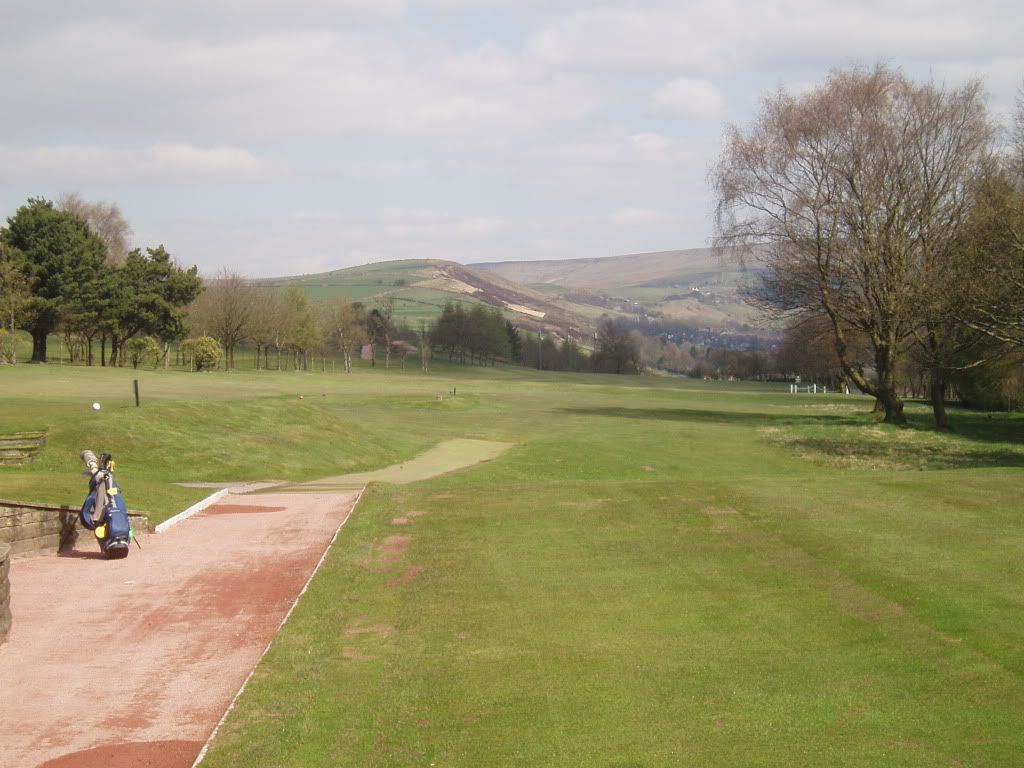
Aim for the mobile phone masts in the distance. The ball will roll considerably to the right on landing.
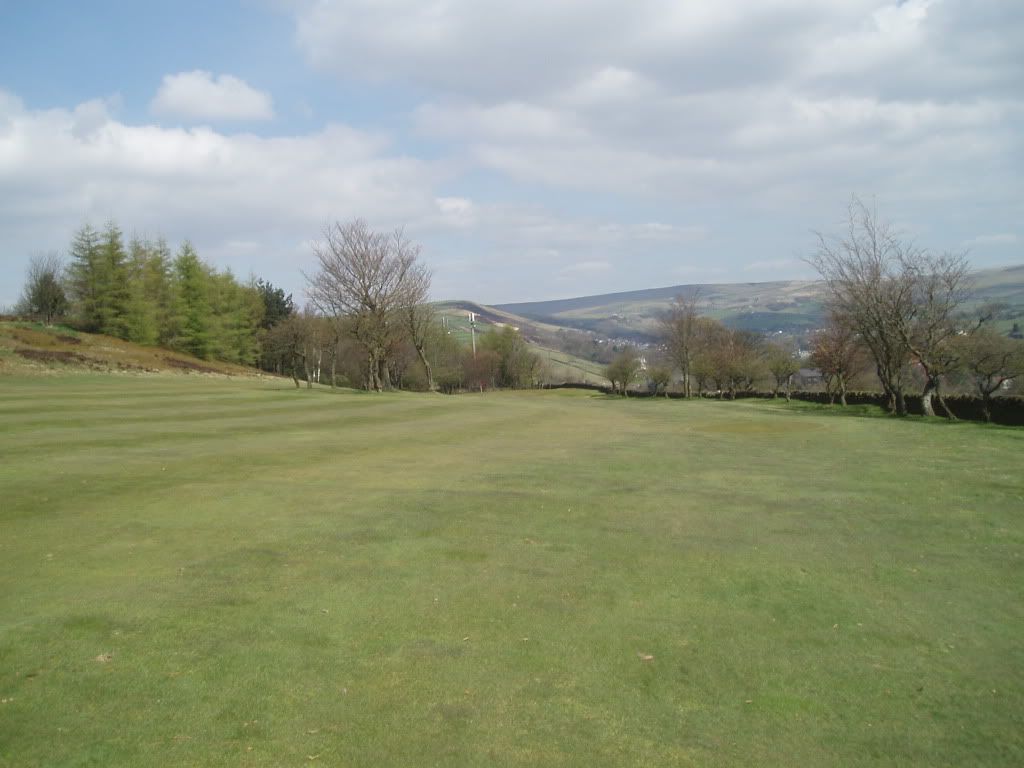
The farther you hit it the more you become aware of the out-of-bounds wall on the right.
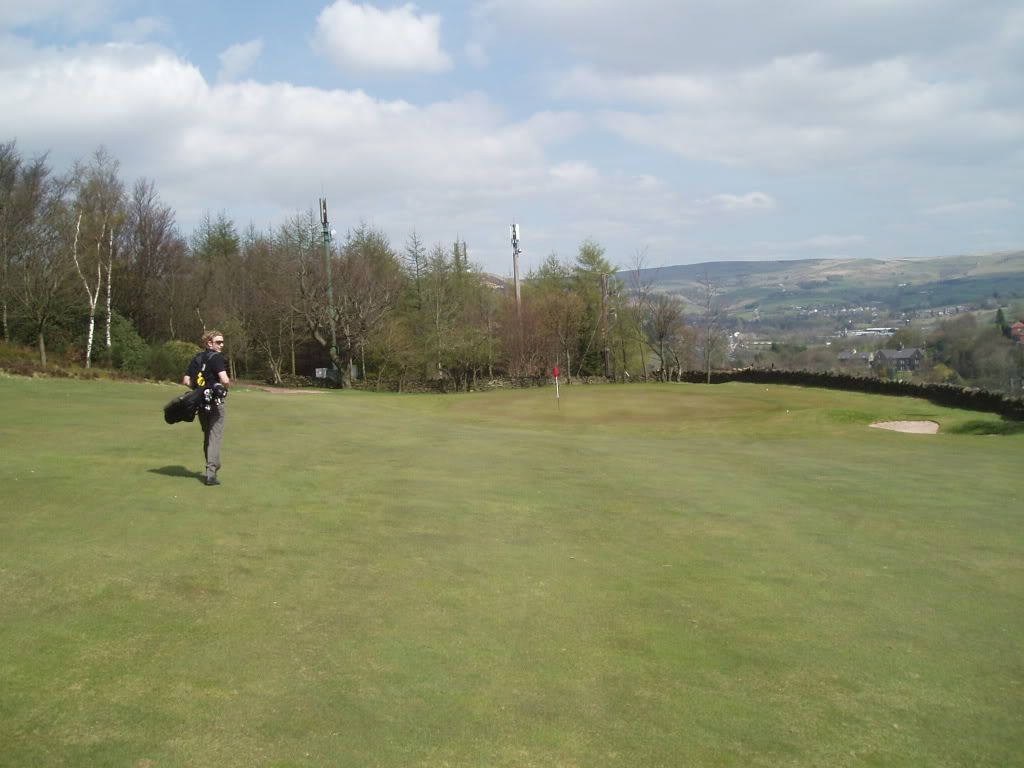
You would dearly like to be able to aim further left on the approach shot. My sons’ shots have rolled off to the right. Mine is in a bunker – but then it often is!
2. 160 yards par 3

The smart play is to hit the hump of ground in front of the green to the left and let the ball feed onto the ledge putting surface.
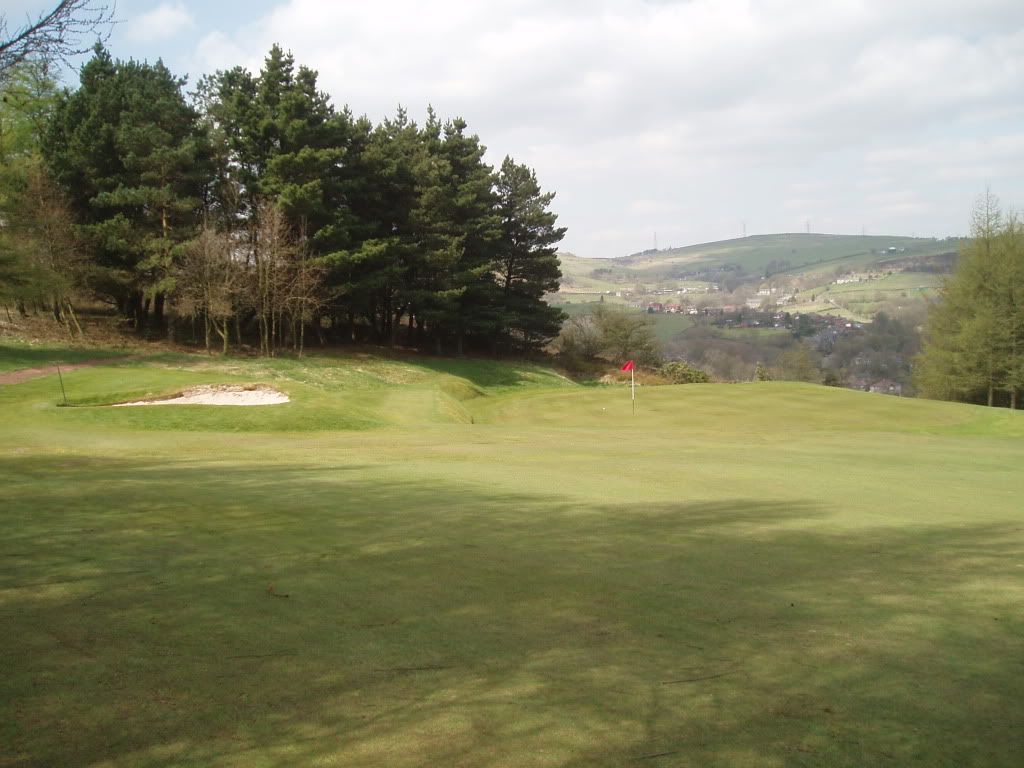
There are a number of these banks to the side or rear of several greens. We wondered if they should be shaved to allow the ball to run back onto the putting surface when pitching a recovery shot from the side.
3. 428 yards par 4
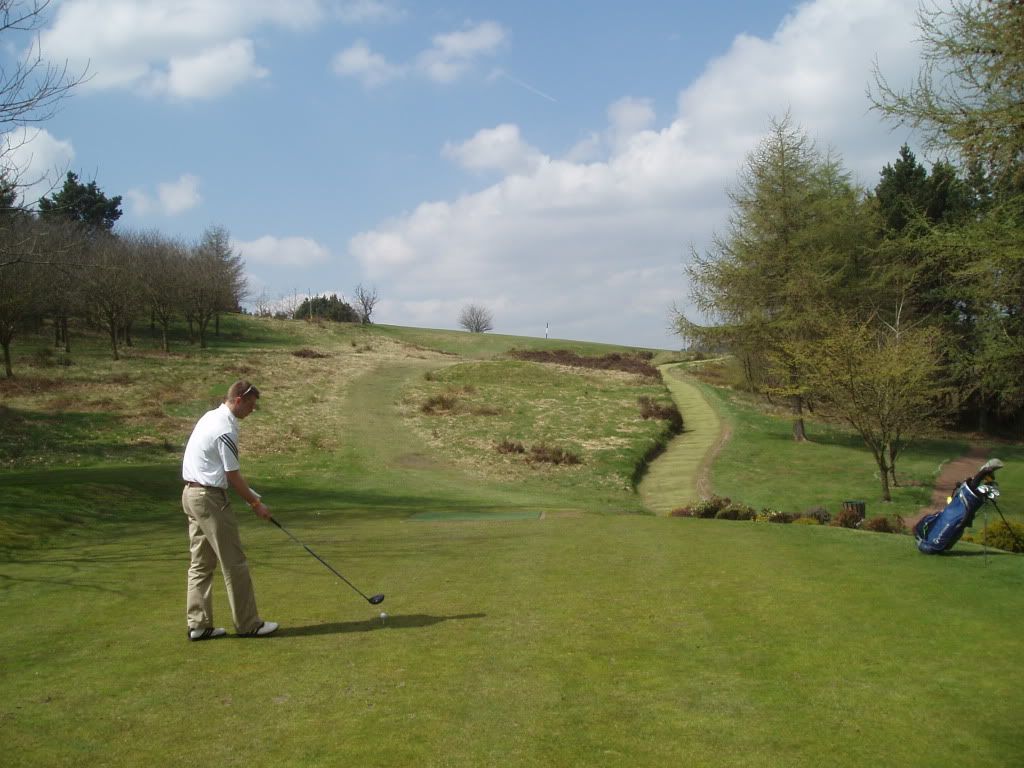
The advice is to hit the tee shot between the marker post and the tree to its left. Why not put the marker post on that line?
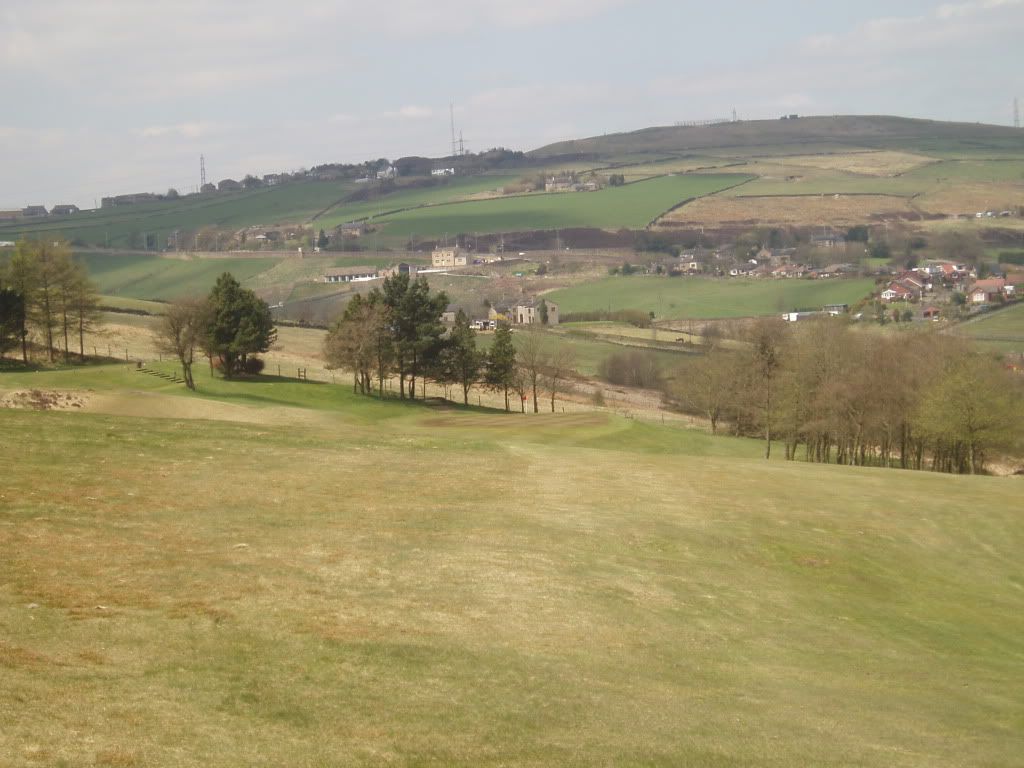

You can see how these severe slopes punish anything veering to the right, yet it is difficult to bring yourself to aim sufficiently left when you have achieved the satisfaction of holding your tee shot to the left. Stroke index 1, and you can see why.
4. 317 yards par 4
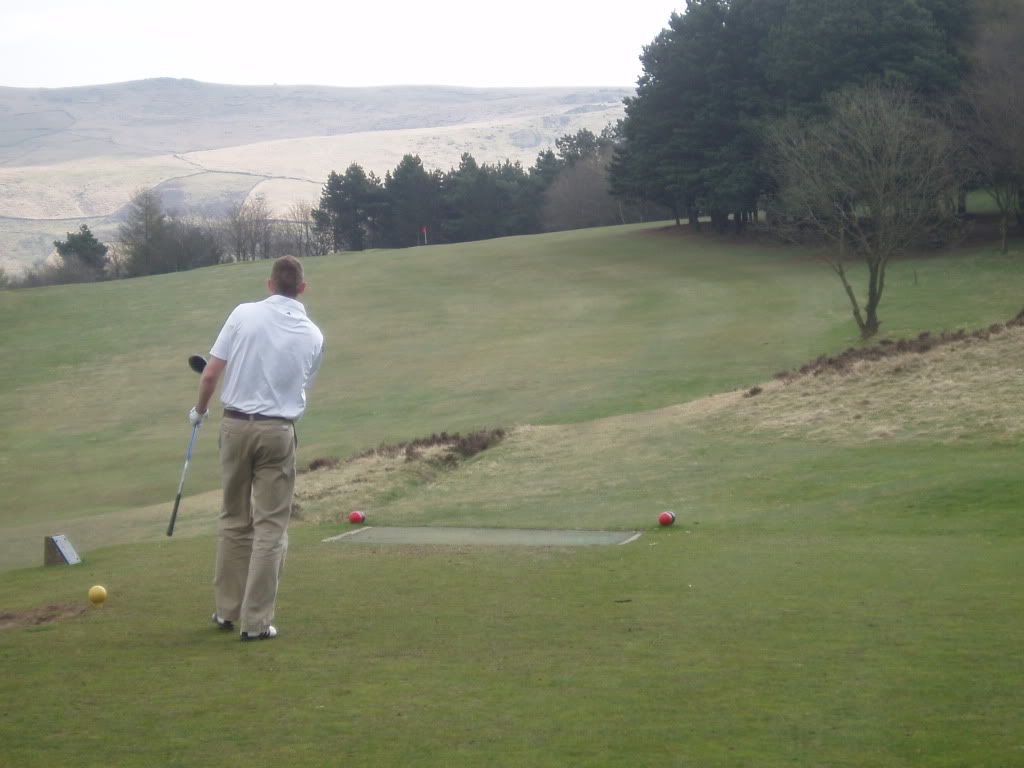
You are encouraged to keep as close as you can to the trees on the right. But you slightly wonder why the trees are there, because if you could hit your tee shot into where they are you would not fall away down the hill to the left and you could approach the very long green (59 yards) along its axis.
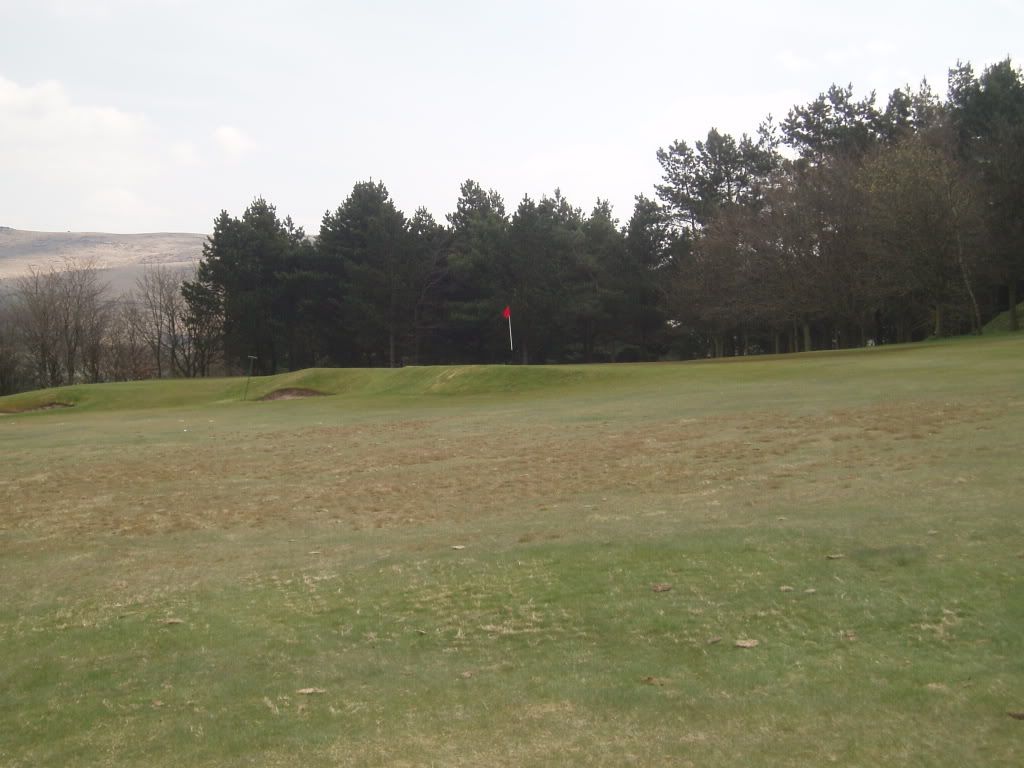
It’s a tricky approach across bunkers and a ridge when you come in from the left, as you are almost bound to do. According to the course planner there were 4 bunkers on the left. There were only 2 today.
5. 157 yards par 3
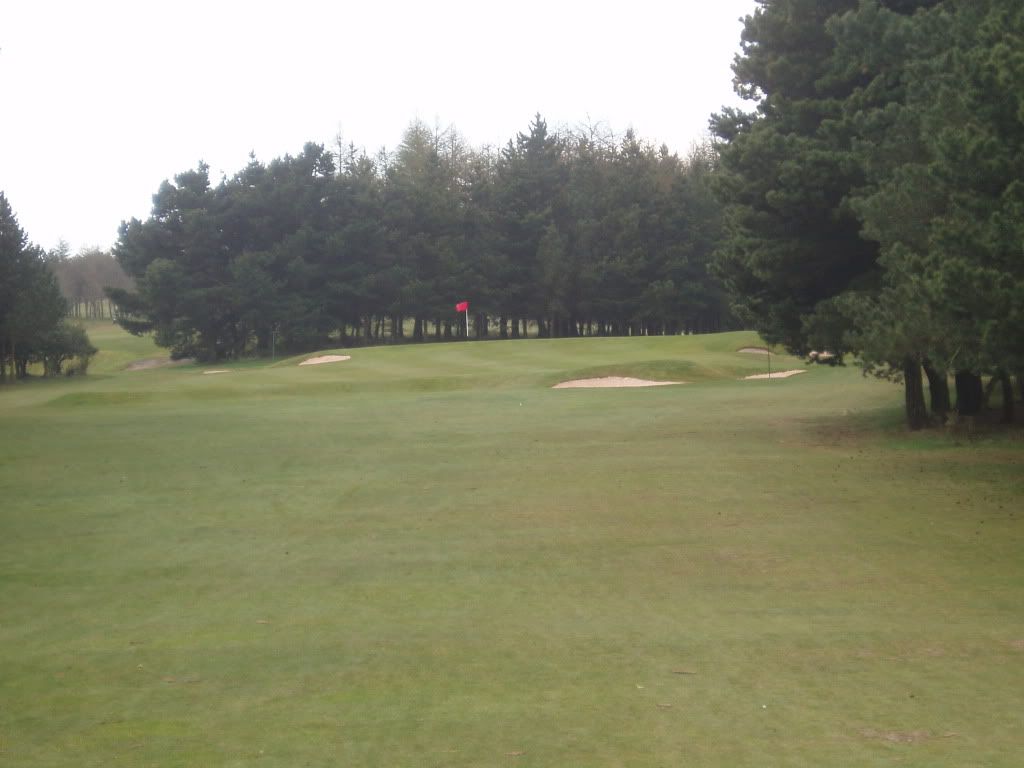
This hole is named ‘MacKenzie’s Green’ and it is reputed to be the only remaining MacKenzie green on the course. The main problem is to abandon vanity and to take enough club not only to climb the hill but also not to fall foul of the false front which will, all too easily, return your ball almost whence it came.
6. 388 yards par 4
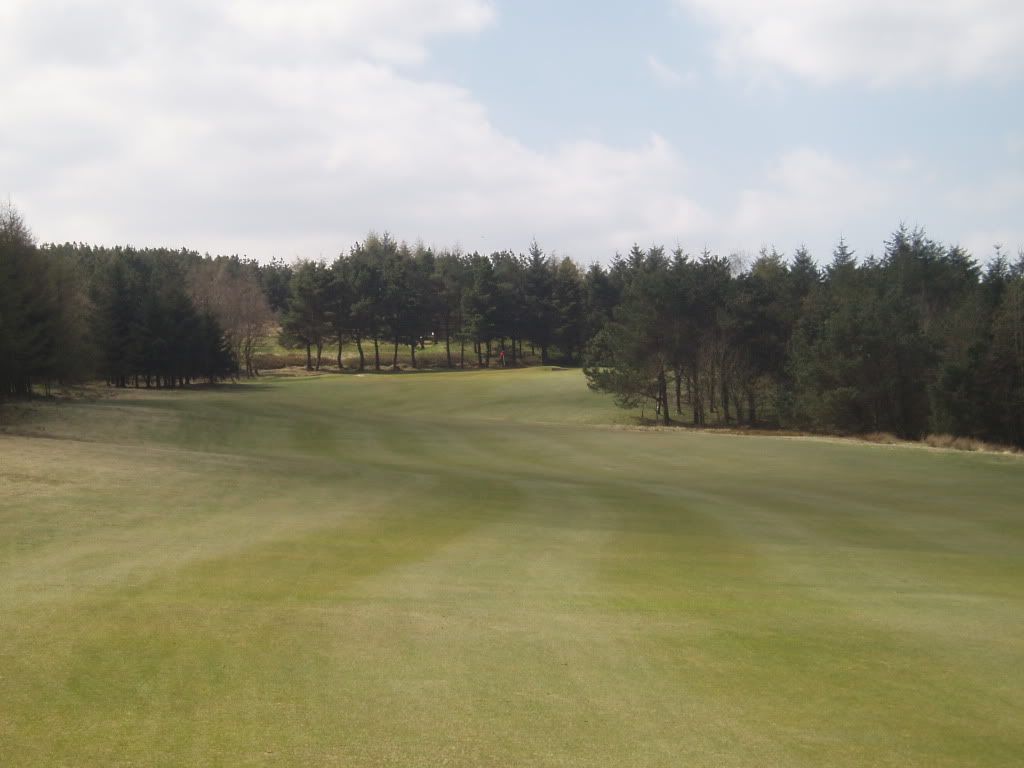
As Stroke 3, this hole seems far longer than 388 yards. It is actually straight forward, but the way it appears from the tee is that the drive should favour and hold the left, and so it proves.

The approach shot is more uphill than my photograph suggests. Add a club or two!

I forgot to mention that reading putts was very difficult. What appear to be straightforward putts are anything but: downhill seriously fast, uphill much more strenuous than imagined, sidehill – good luck!
7. 351 yards par 4
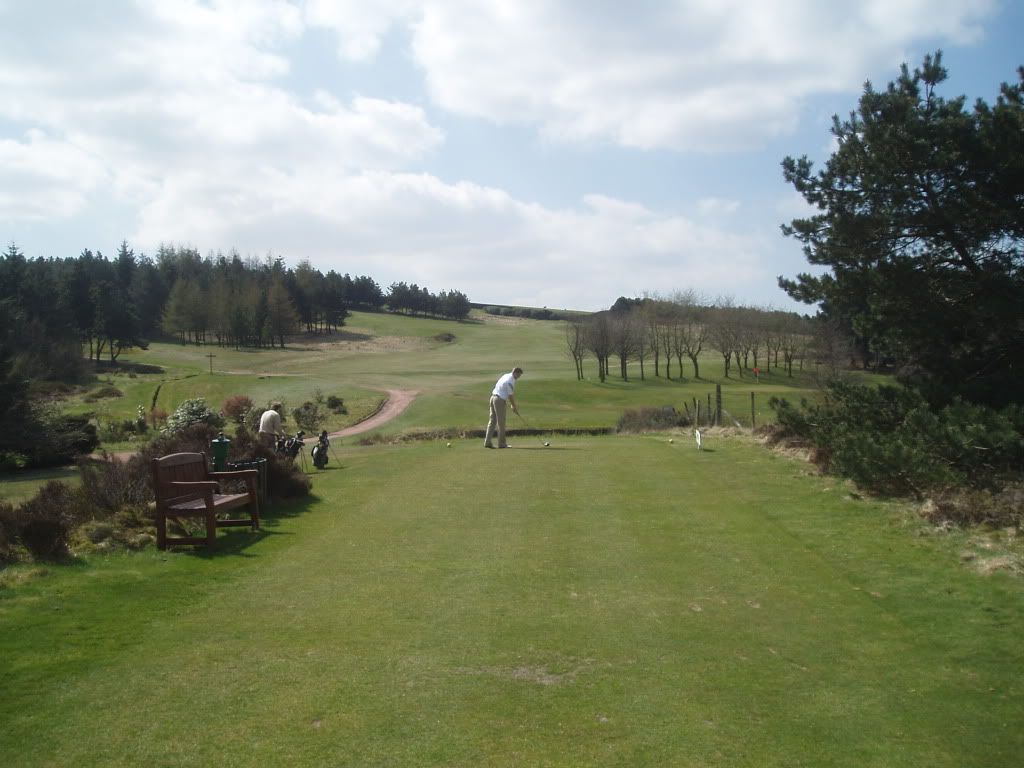
Vestiges of an old green suggest that this was once a straight hole, but as we played the hole it was a severe dog-leg to the left. Edward hit a superb drive, long and straight, yet it rolled back down the fairway for almost 100 yards. Giles hooked a 4-iron into the left rough, but the ball stayed there, lying well and he had by far the easier approach. Quirky to say the least!
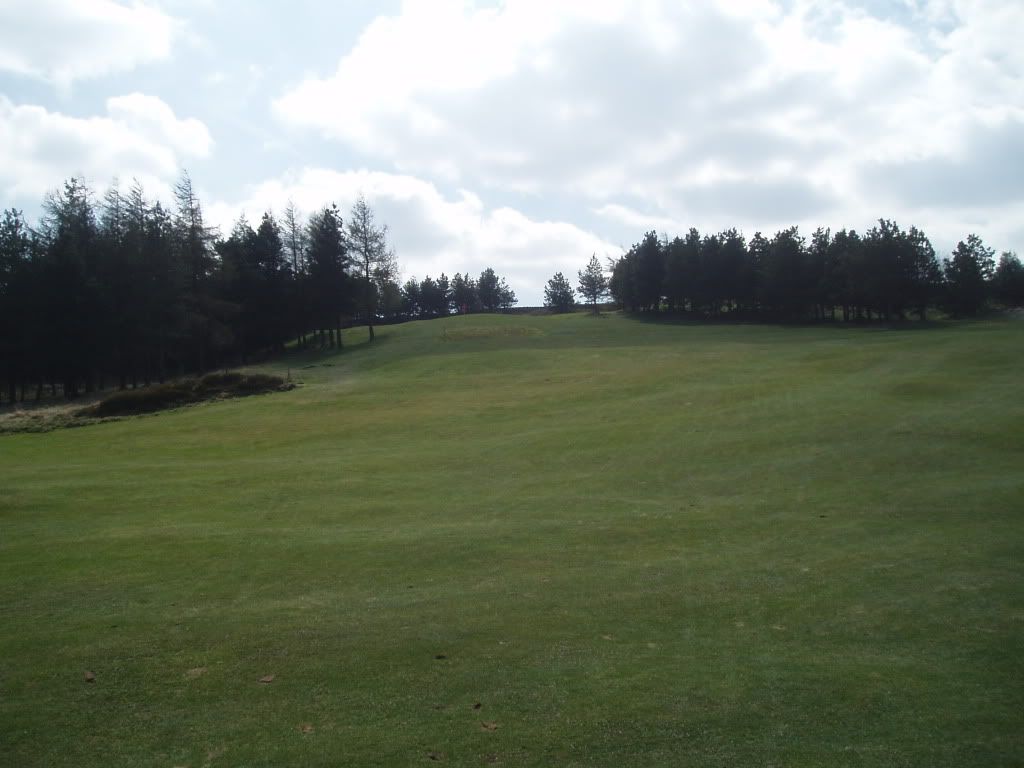
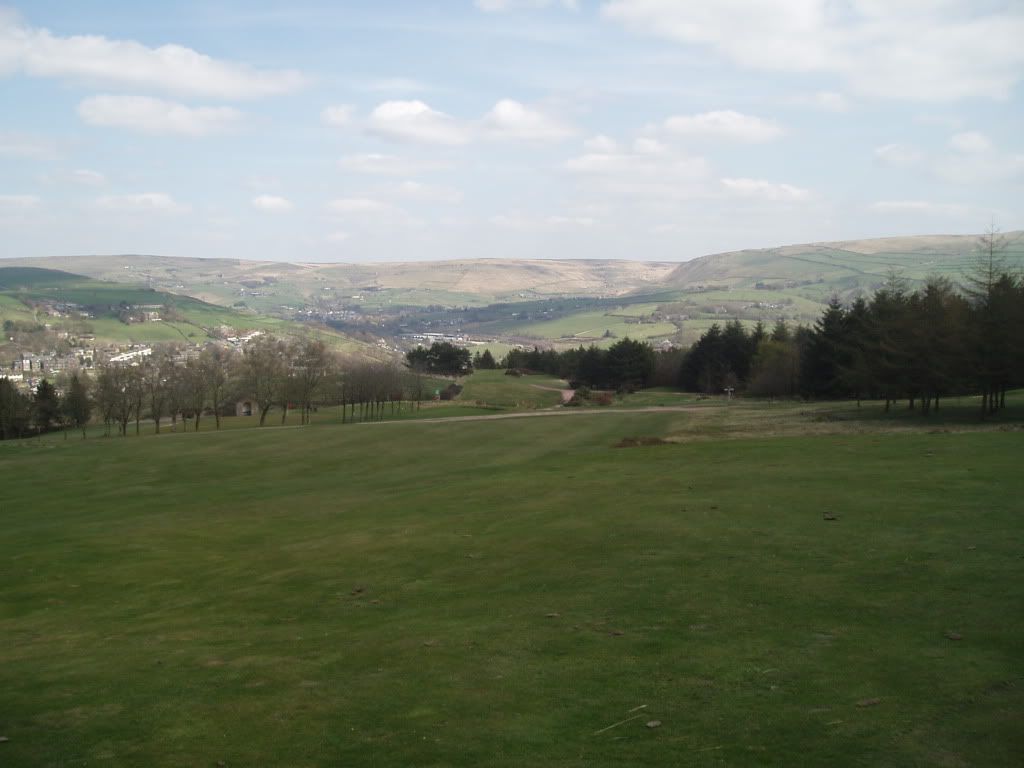
It is quite a steep climb to the green anything coming up short will roll back down the hill for a long way.
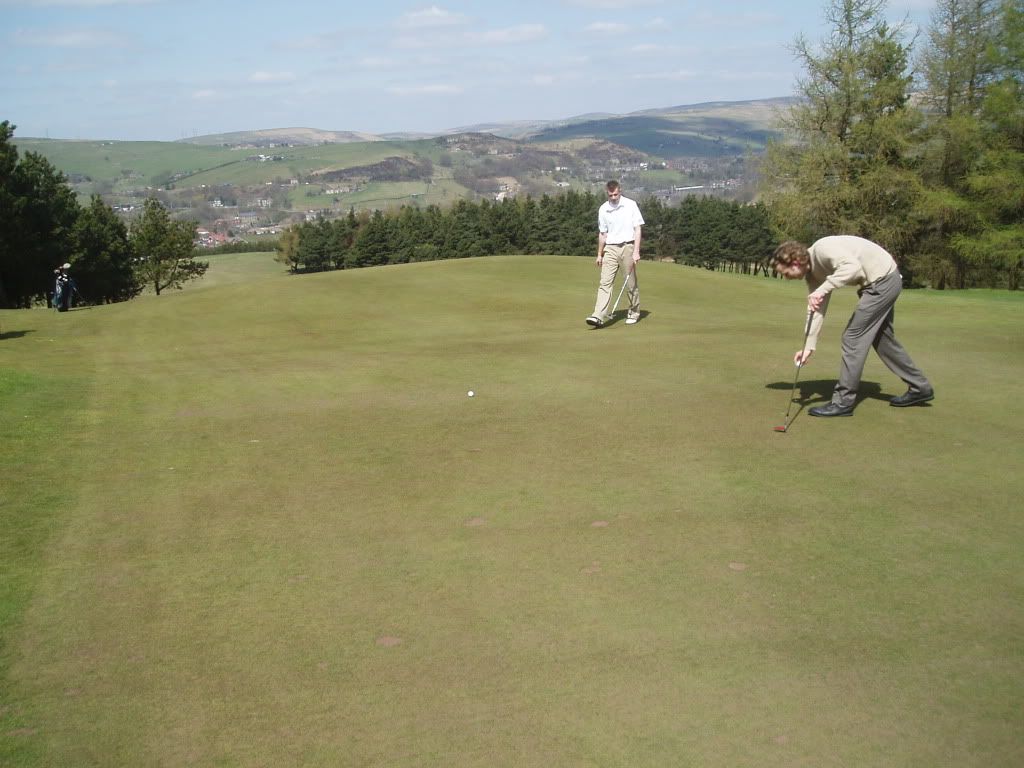
There is quite a lot of movement to the putting surfaces, and this green at only 22 yards in depth calls for an inch-perfect approach shot which is difficult to judge up such a steep slope,
8. 403 yards par 4
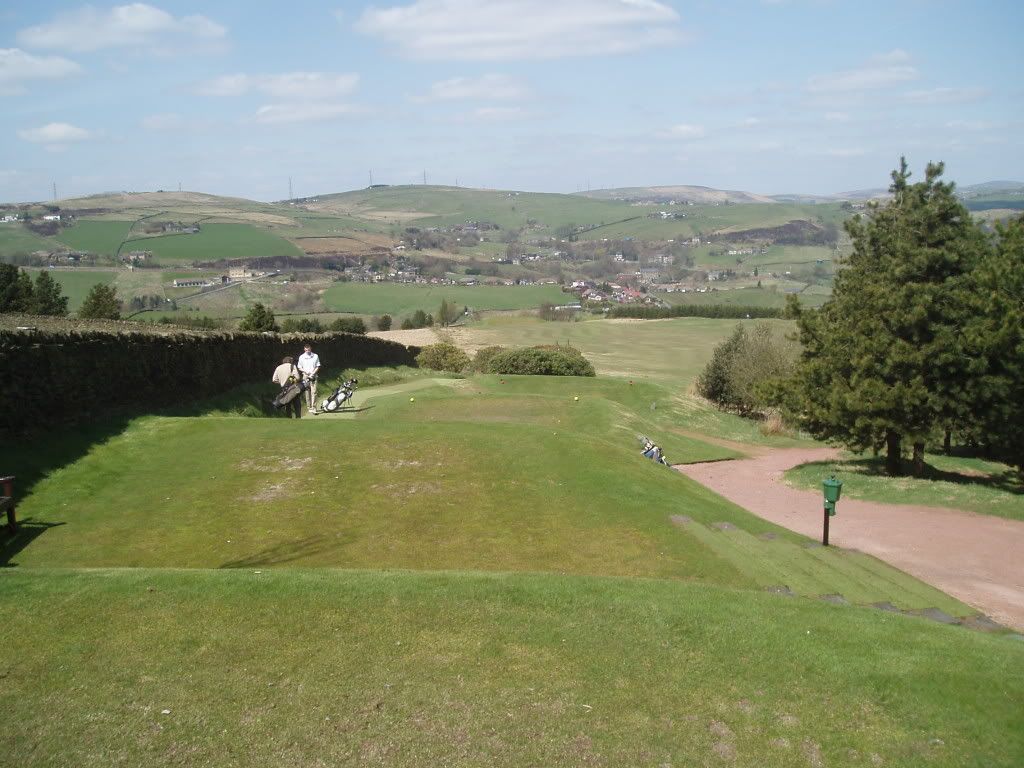
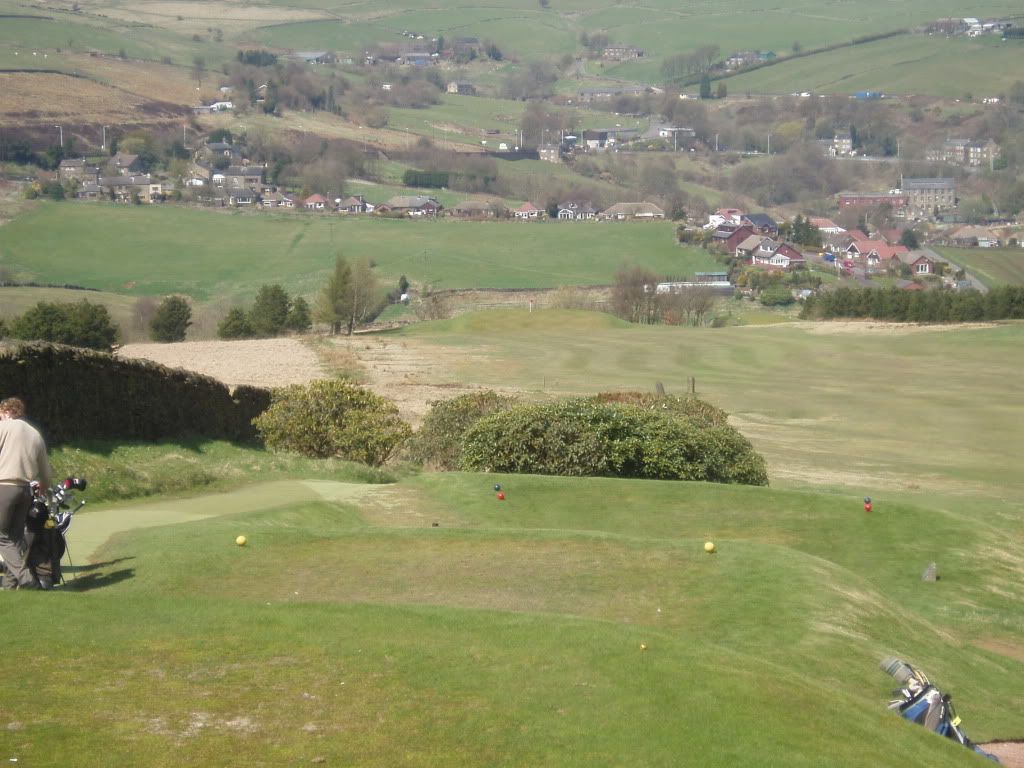
What an inviting drive!
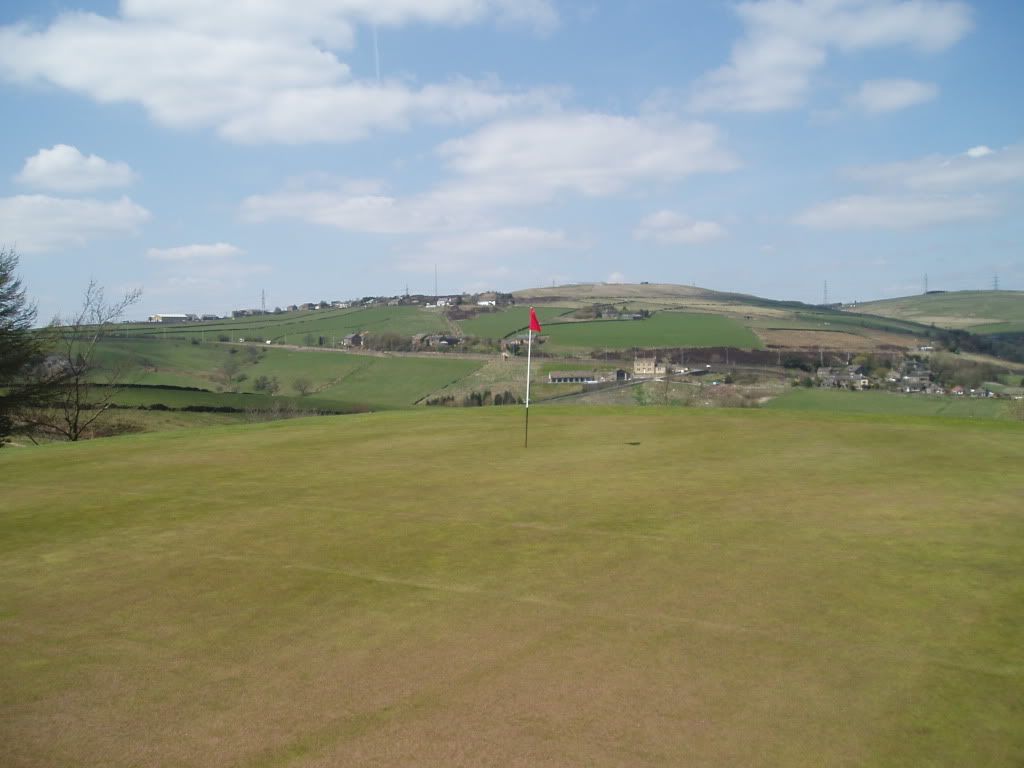
But you must be straight, for approaches to this narrow green from left or right are tricky. Land the approach 30 yards short and let it feed onto the green.
9. 336 yards par 4
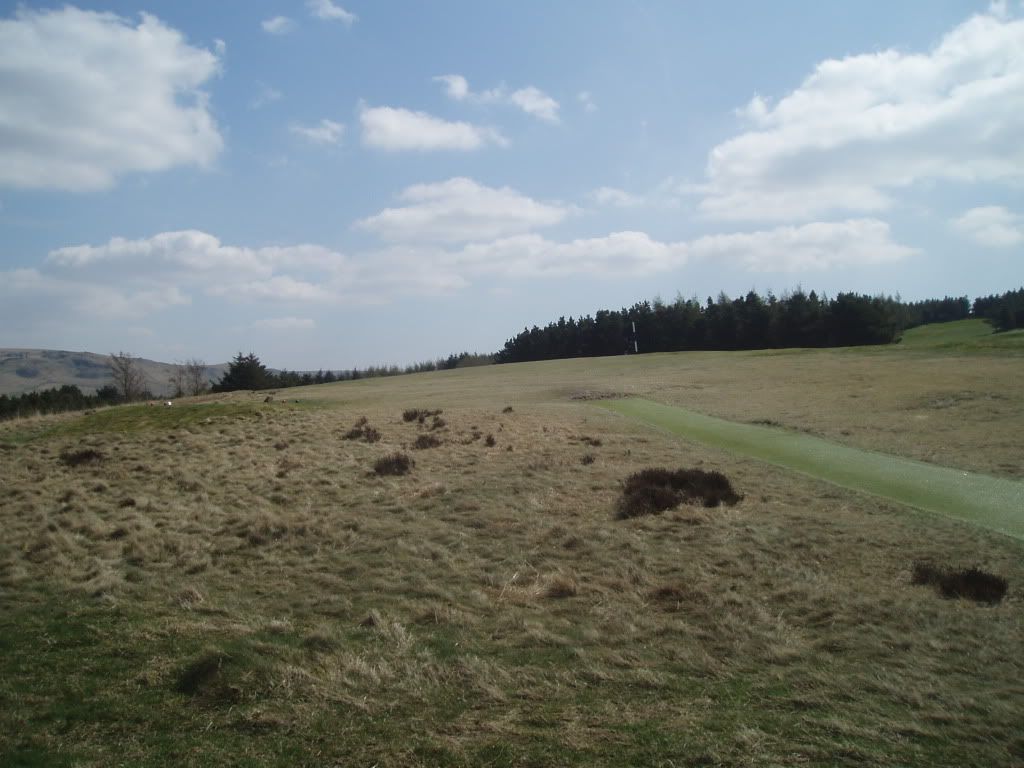
You are advised to play over the marker post, or slightly left of it if you are a long hitter. I went over the marker post and eventually found my ball in horrible rough ground down to the left, from which I could not find the green. Both sons hit mid-irons slightly right of the post, coming up just short of the trees. They both had simple approaches down the length of the green. Mmmmm.
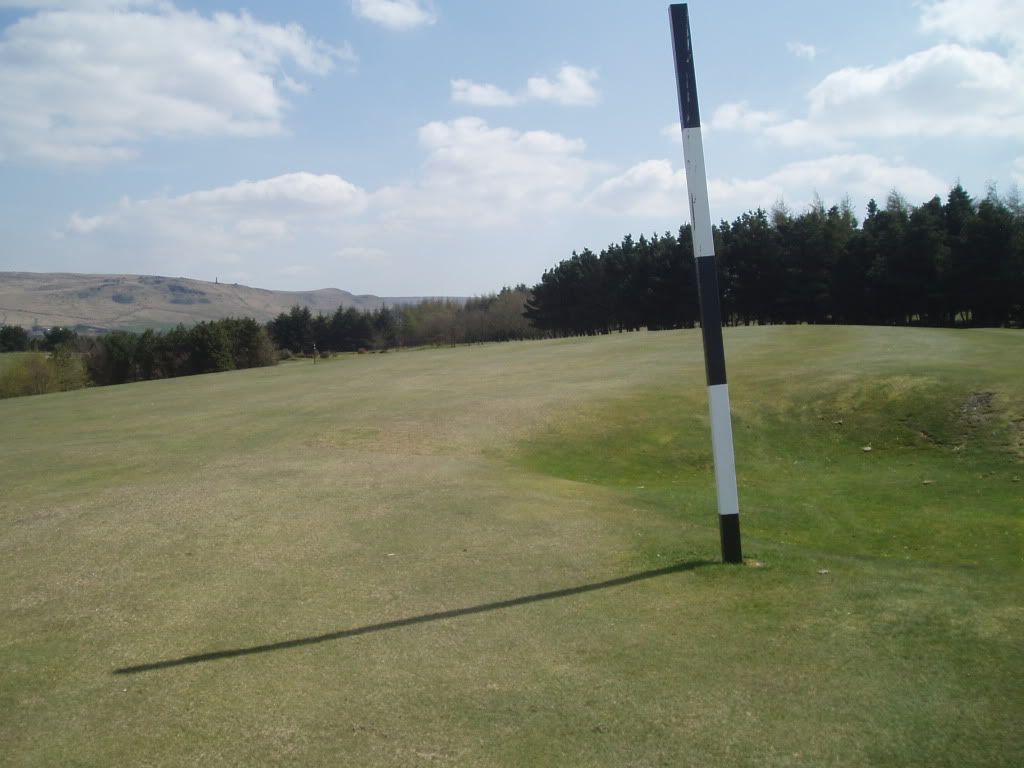
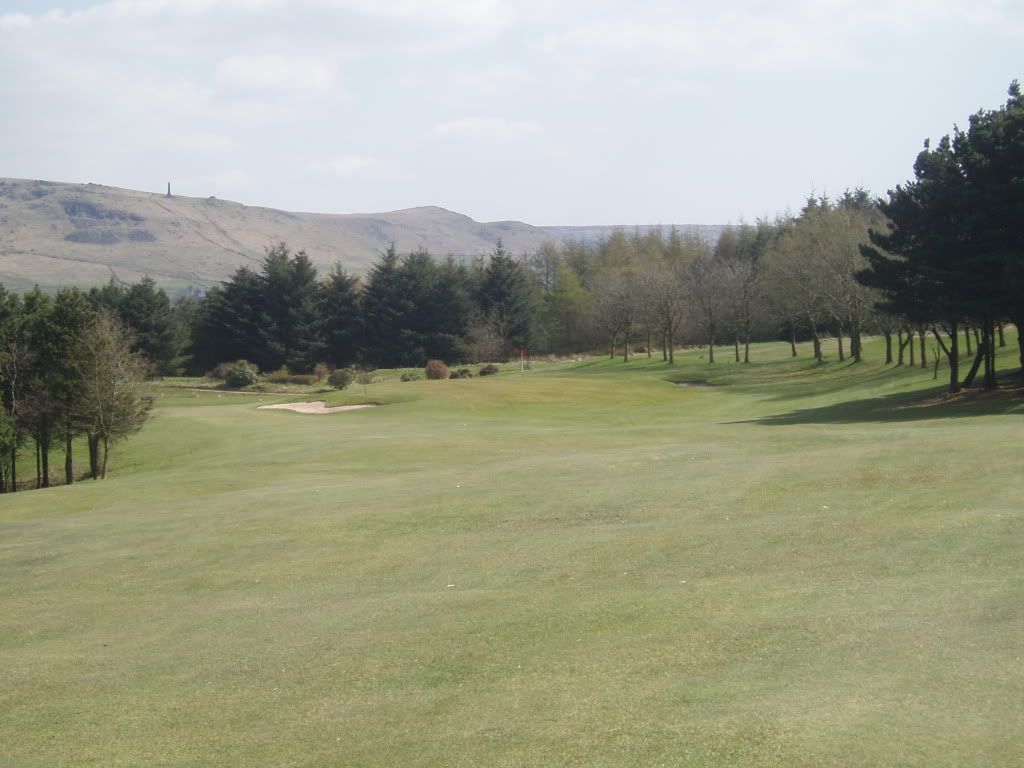
The hole is named Colt Hill, but I am not aware of any Colt involvement in the course.
10. 150 yards par 3
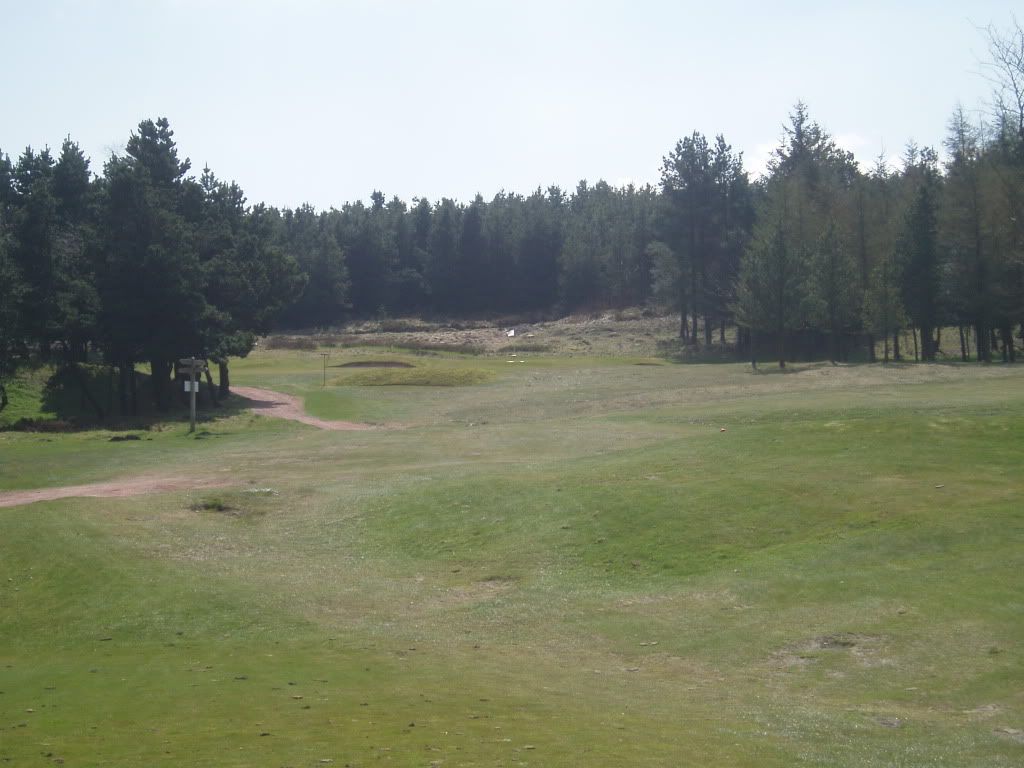
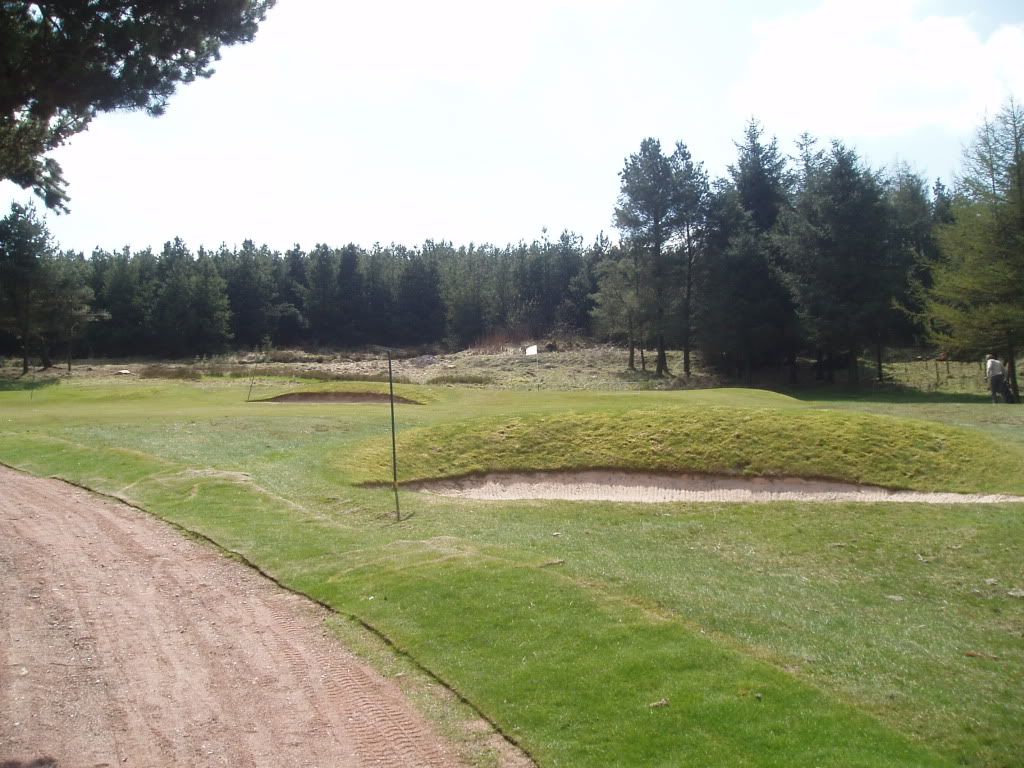
An uphill par 3 playing more like 170 yards with three green-front bunkers and one about 25 yards short of the putting surface. There is a bank at the rear of the putting surface which ought to feed the longer ball back down onto the putting surface.
11. 330 yards par 4
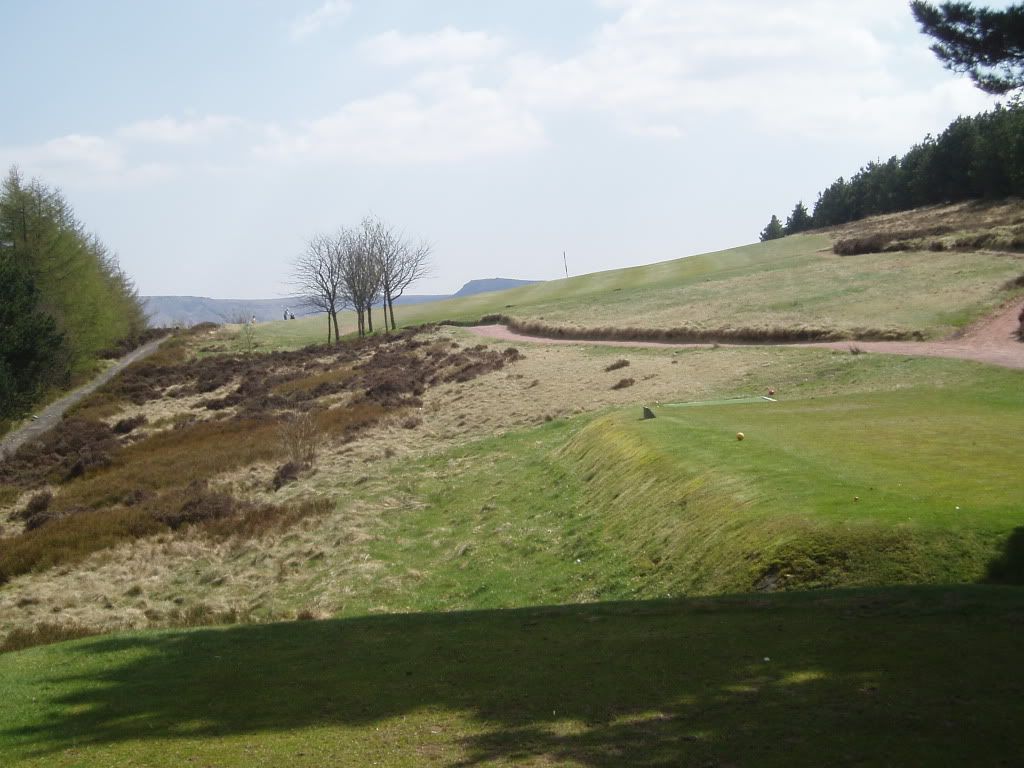
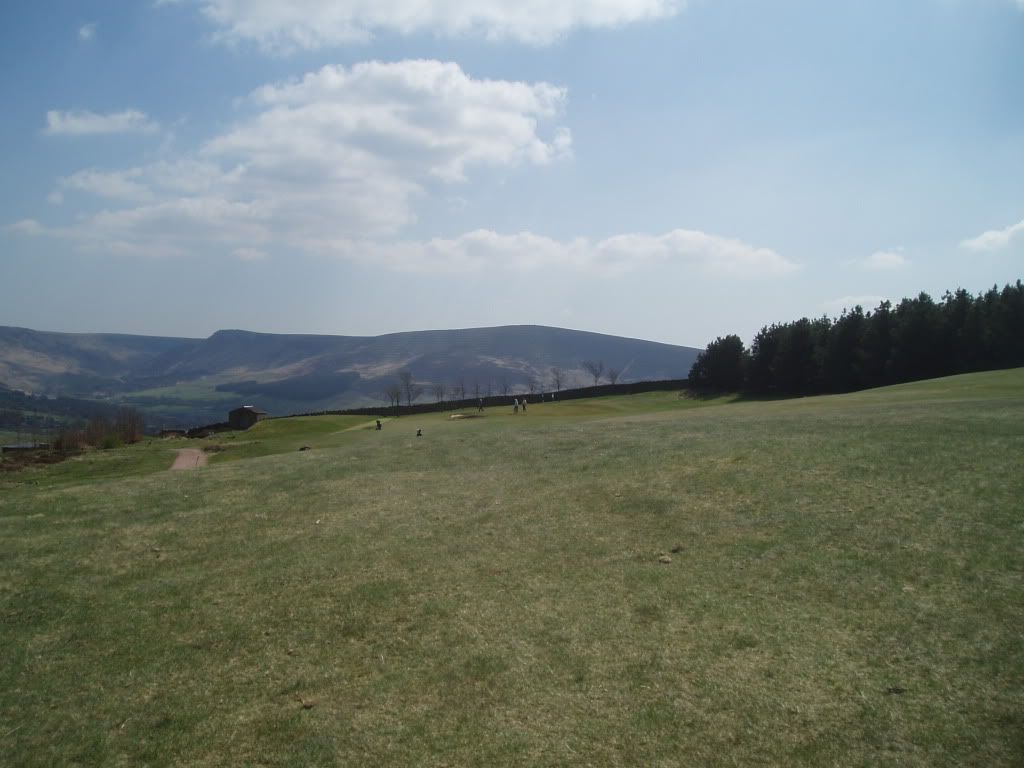
How severe the side slope on this fairway is! The professional suggests that the best play is to leave the tee shot on the high ground by the marker post, hitting well right to allow for a big bounce to the left on landing. The approach shot needs to be fed in from front right of the green.
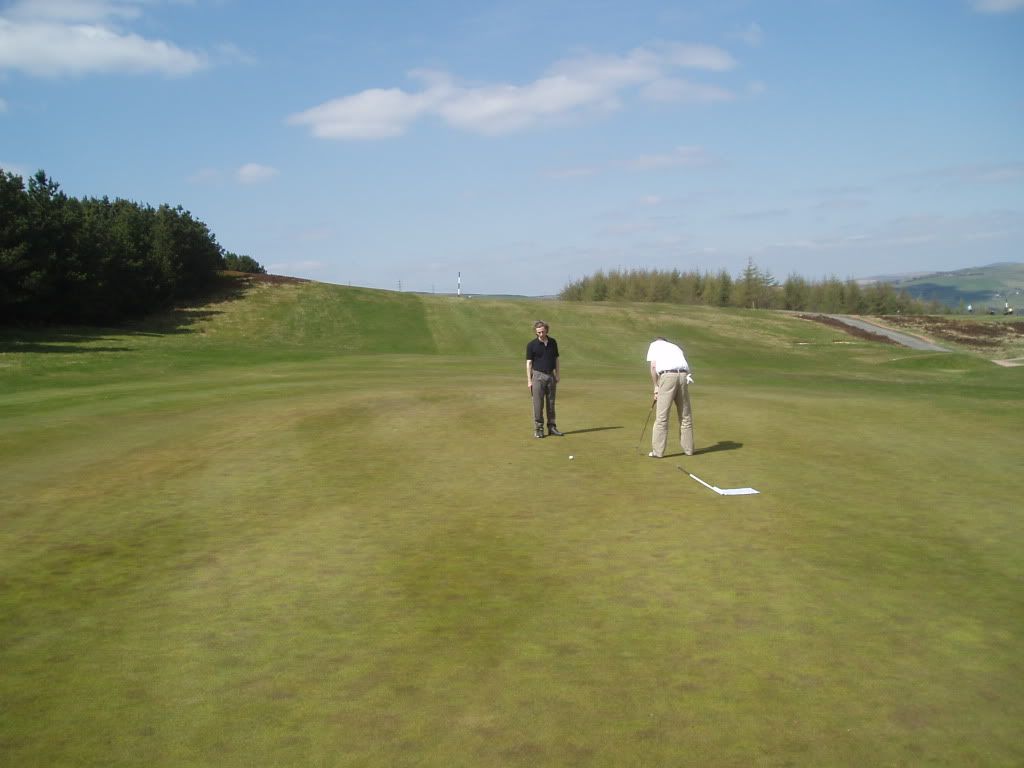
This hole is named Hawtree.
12. 477 yards par 4
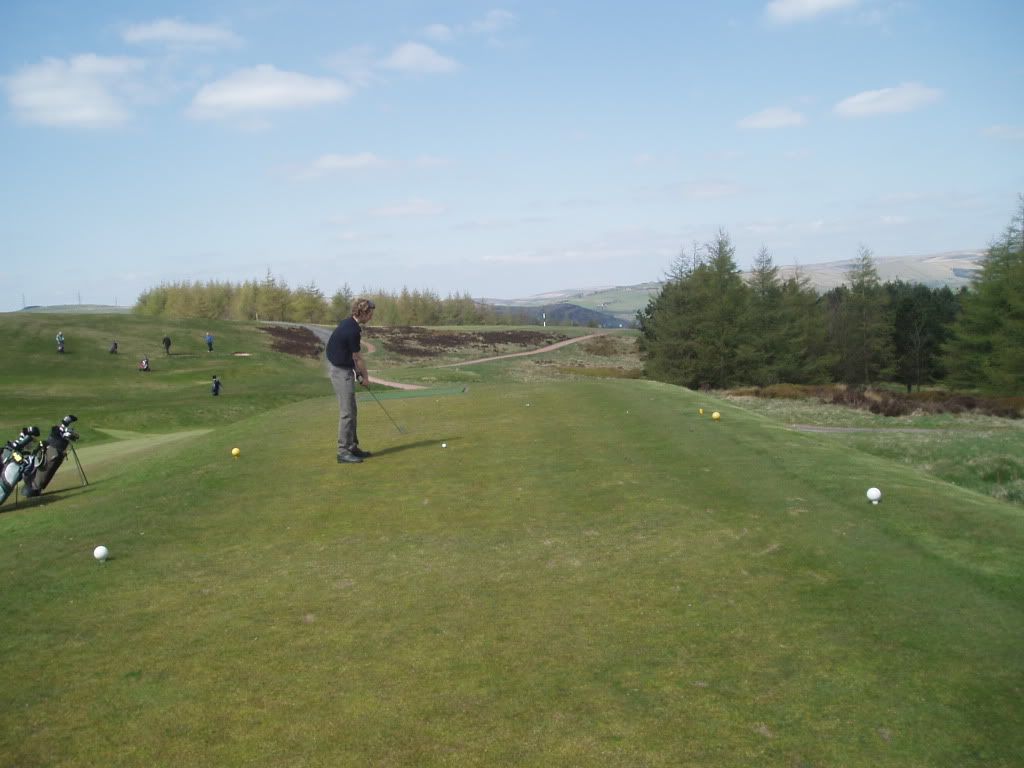
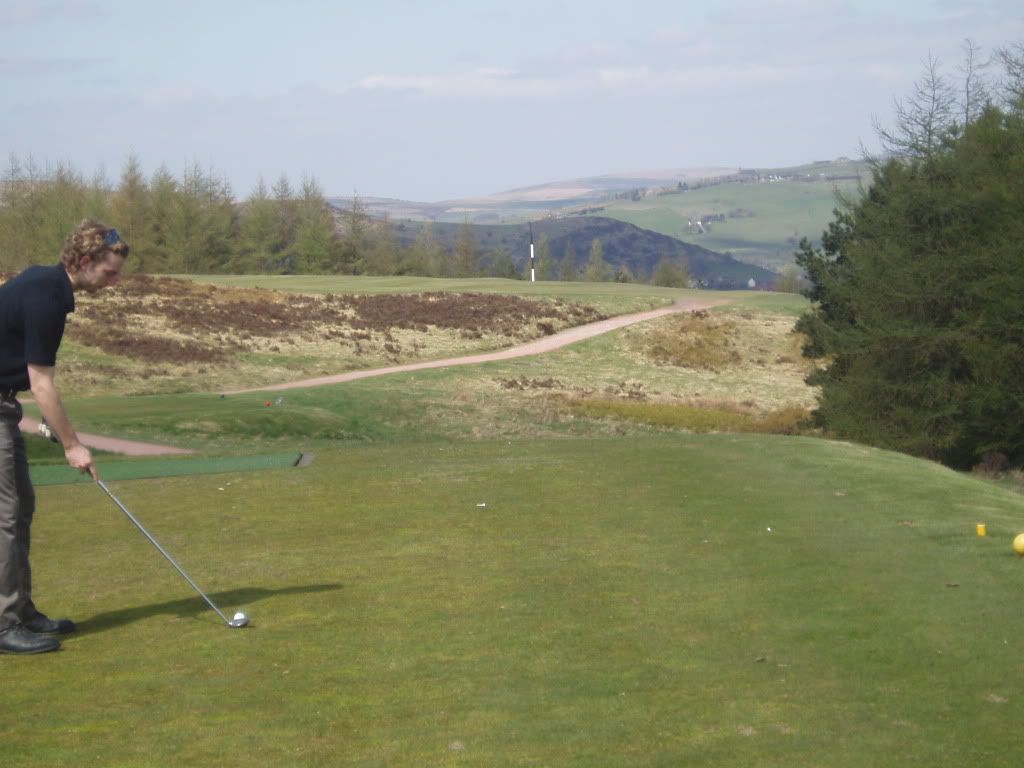
Aim for the marker post. The ball will break sharply to the right, hopefully running well downhill towards the green.
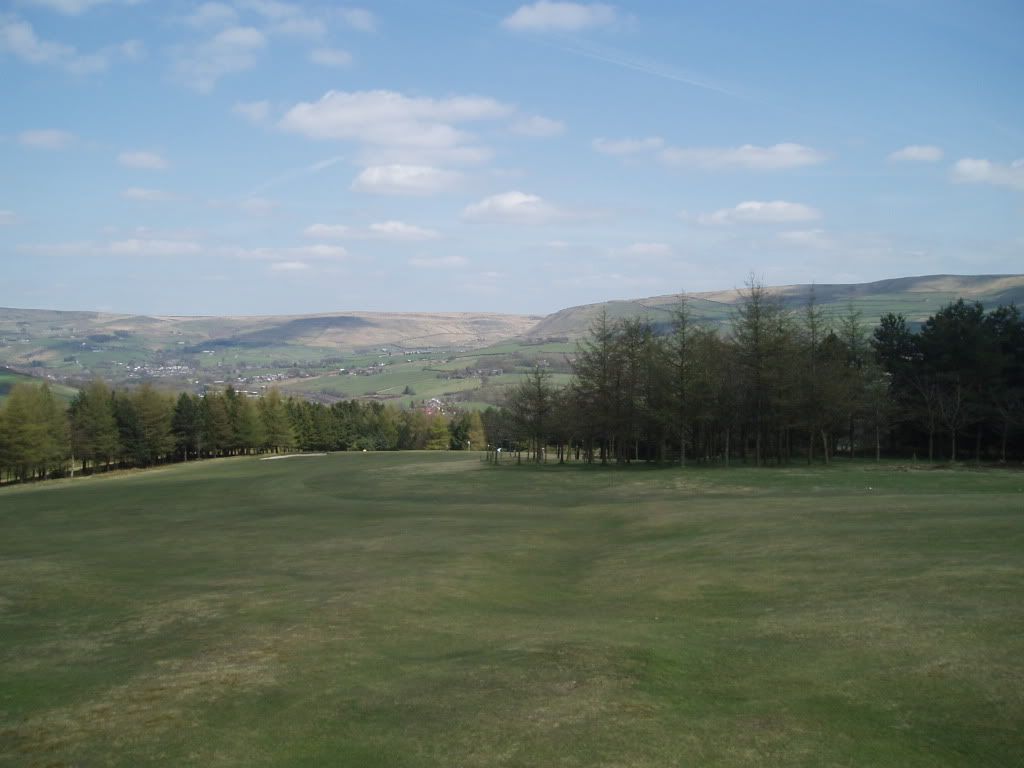
However, if you don’t hit it far enough you could well find yourself cut off by these trees on the right.
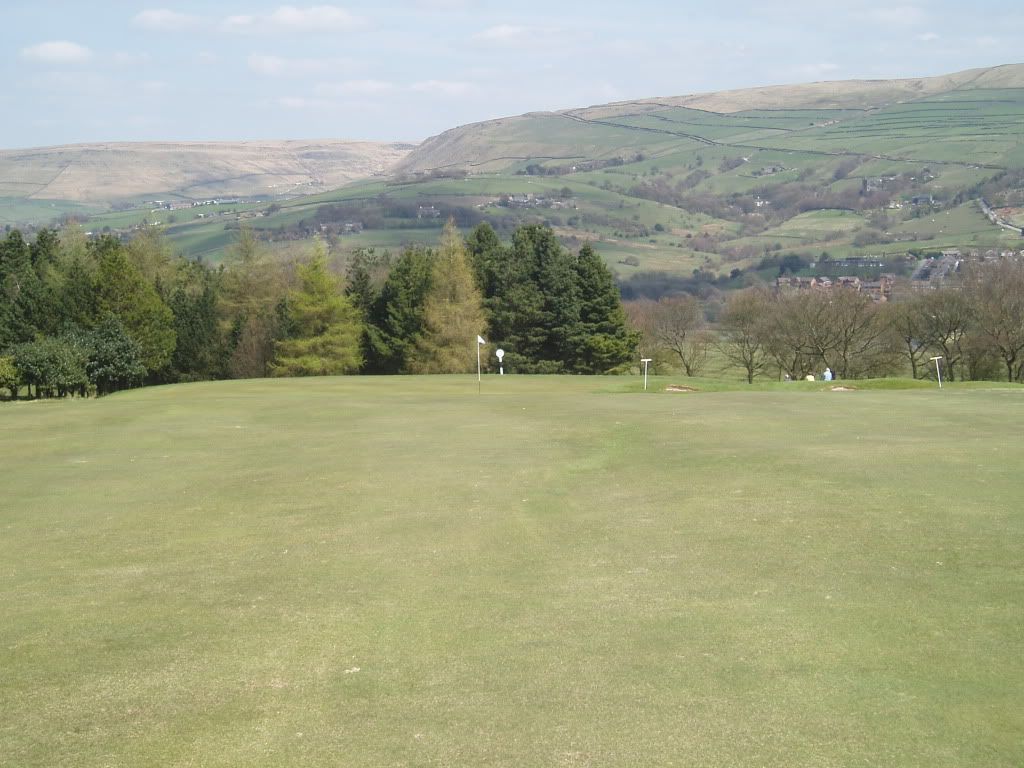
As you approach the green you begin to realise that the green lies on the far side of a steep bank.

Unfortunately the bank is not cut short or my second shot might not have stopped here! As the green is only 24 yards deep a running approach shot must be gauged to perfection.
13. 341 yards par 4
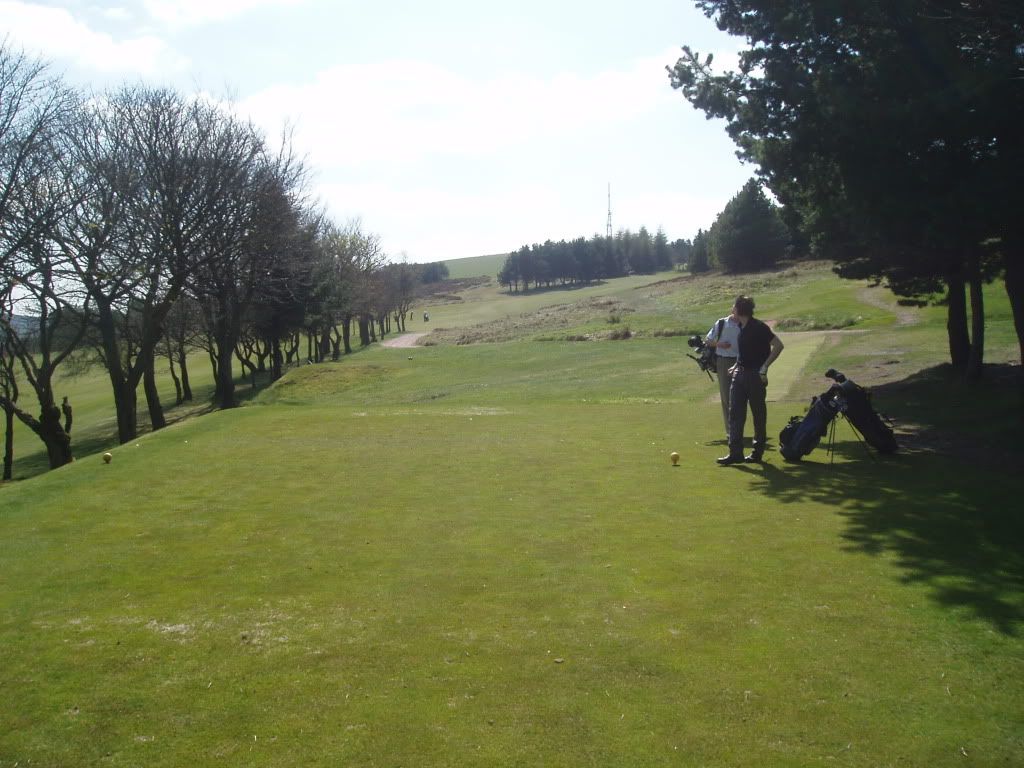
Yet another severely sloping fairway. Aim for the distant mast.
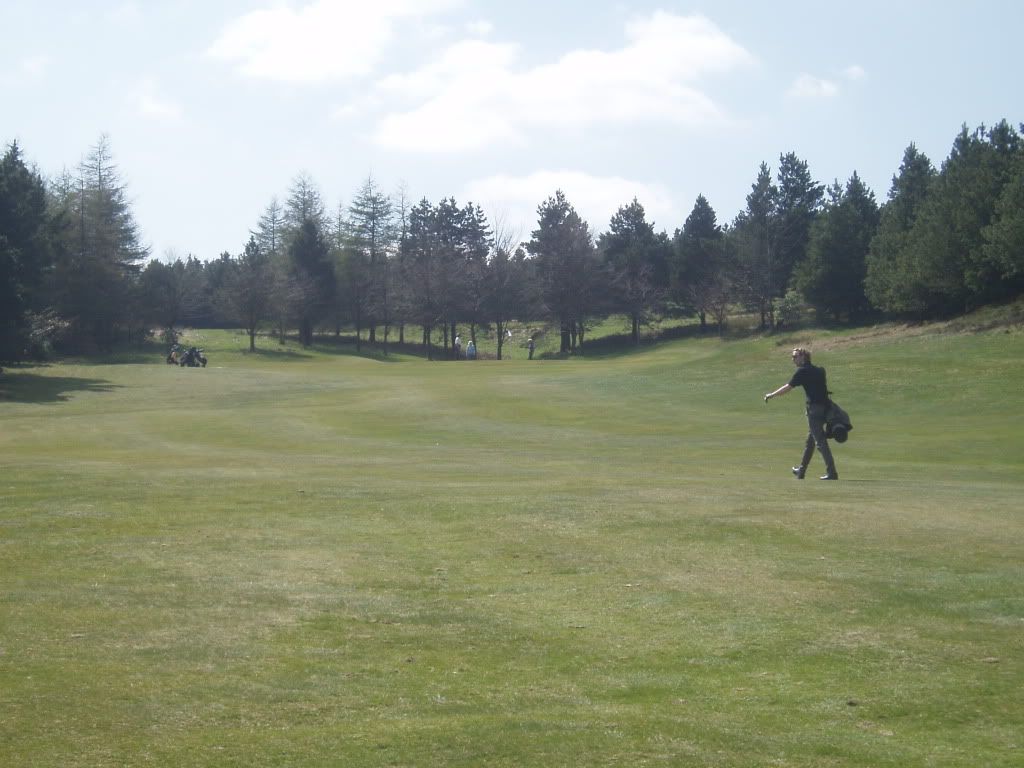
The rise to the green is greater than my photo reveals. The hole plays several clubs longer than the card suggests.

Once again there is a false front to the green on a rising hole, largely precluding the running approach. The putting surface is a mere 20 yards deep.
14. 496 yards par 5
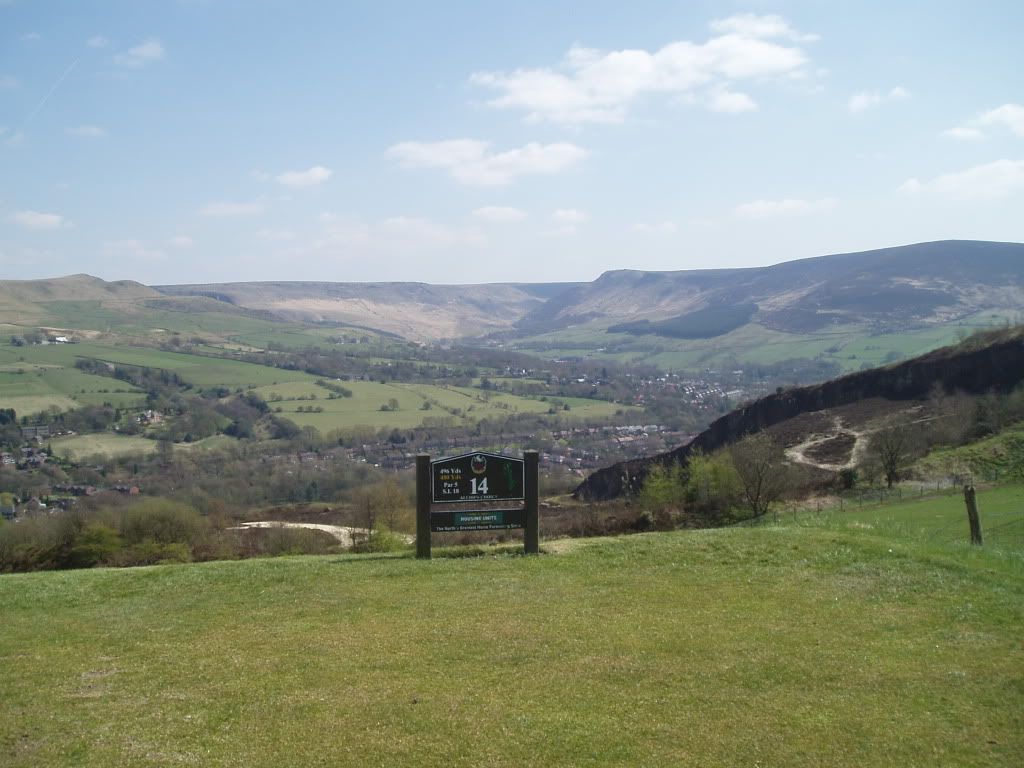
Whatever quibbles there may be about the course or one’s own game, the setting cannot be faulted.
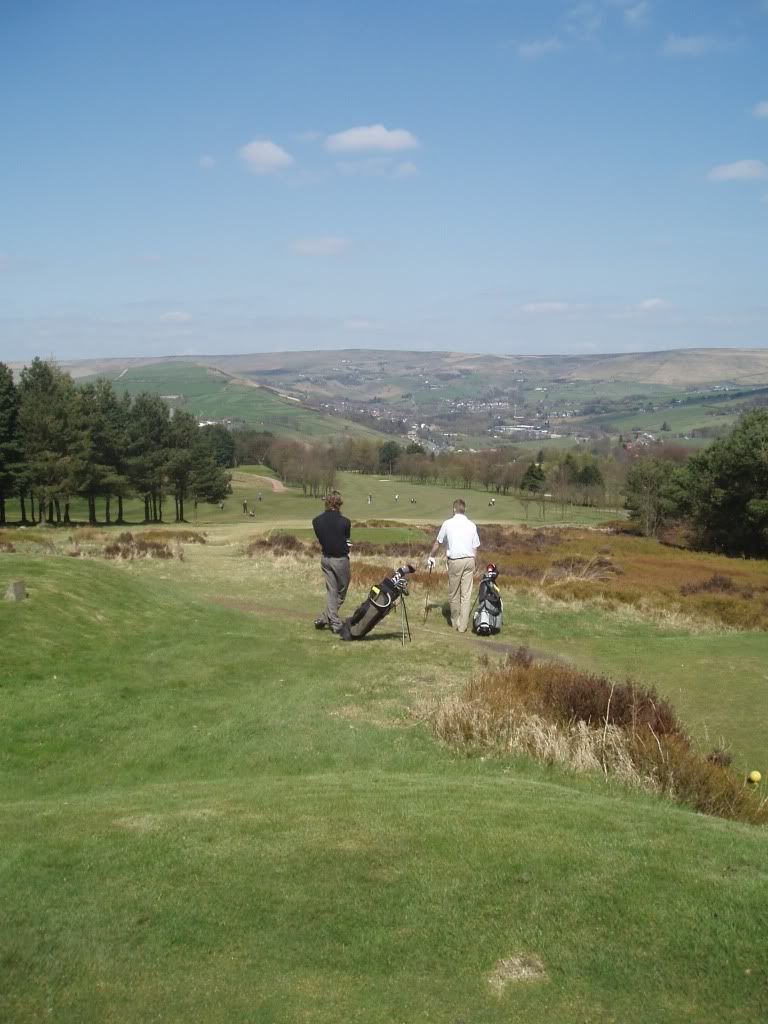
Guess what? The fairway slopes down to the right, so you need to take aim as close as possible to those trees just above Giles’s head. The ball will surely finish on the right edge of the fairway.
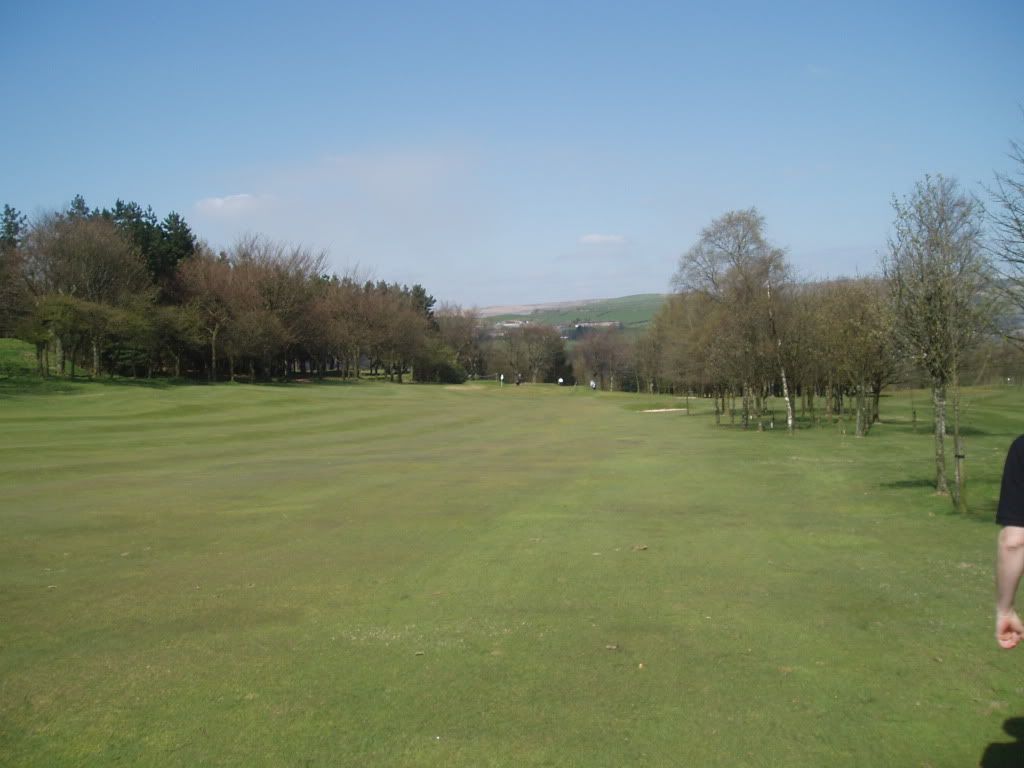
Having driven to here (with the help of gravity) you want to aim your approach shot to run on from the front left…
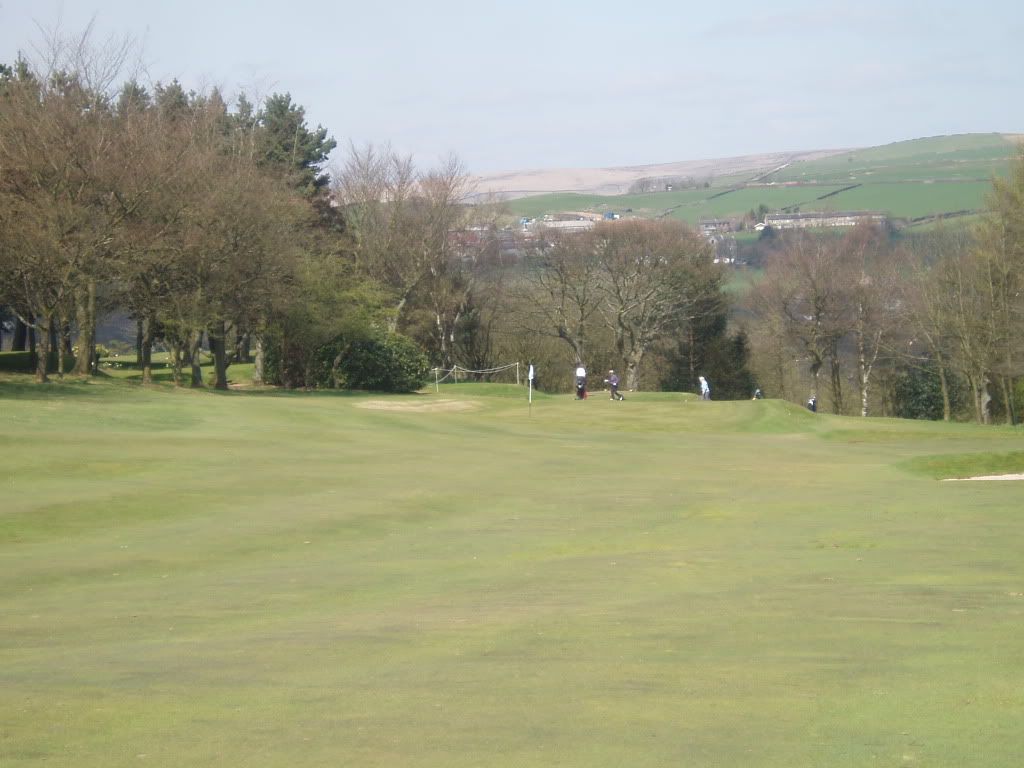
…and those trees and bushes are just where you would like to be landing. At least this green is 42 yards long, very necessary with such a downhill approach. This hole is named Alliss’s Choice.
15. 178 yards par 3


Without the pond this would be a very appealing hole. The pond looks totally out of place in this rugged country.
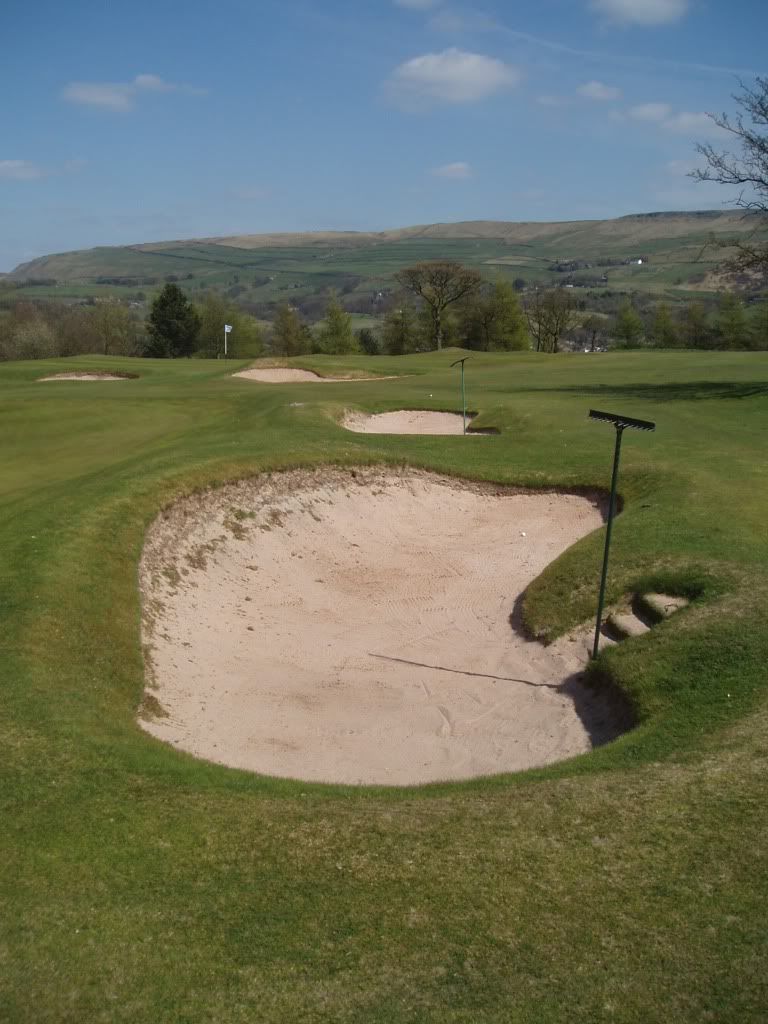
These are serious bunkers, but you must flirt with those on the right if you hope to finish on the green.
16. 325 yards par 4
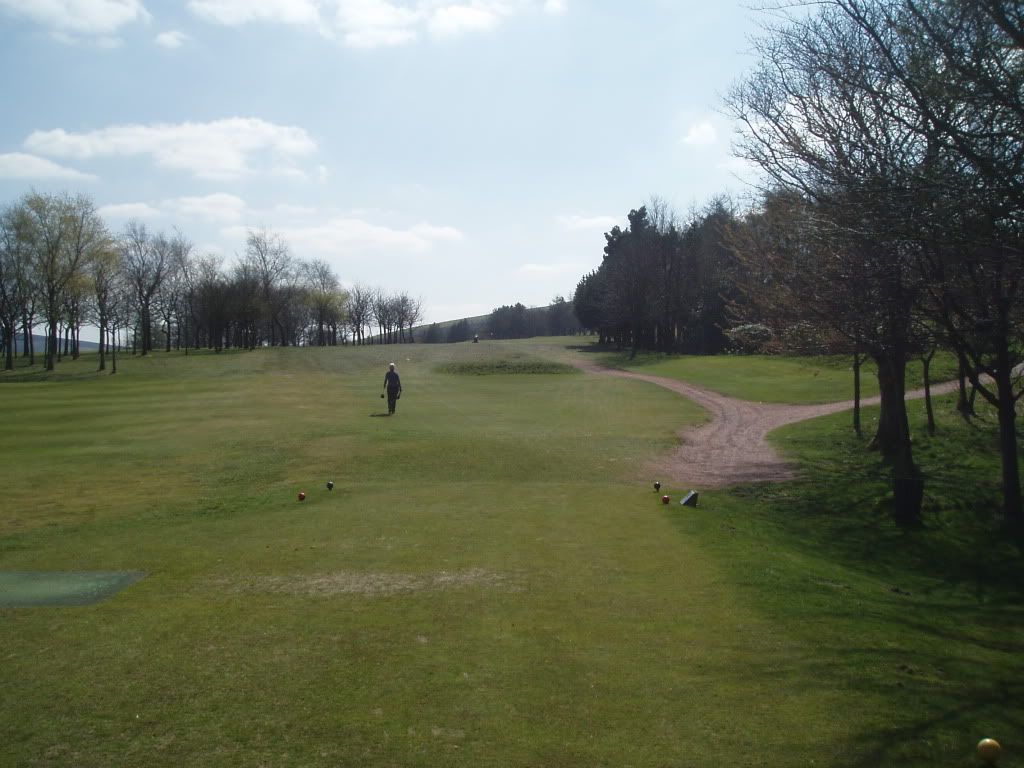
You drive through the gap in the trees to find another rising fairway. Unfortunately the lady in front lost her drive and had to come all the way back to the tee to play another one. Why didn’t she play a provisional at the time? In fairness she was driving straight into the sun and could not have seen the outcome of her drive. Her second drive was easier to find – it only made it to the hummock in front of her!
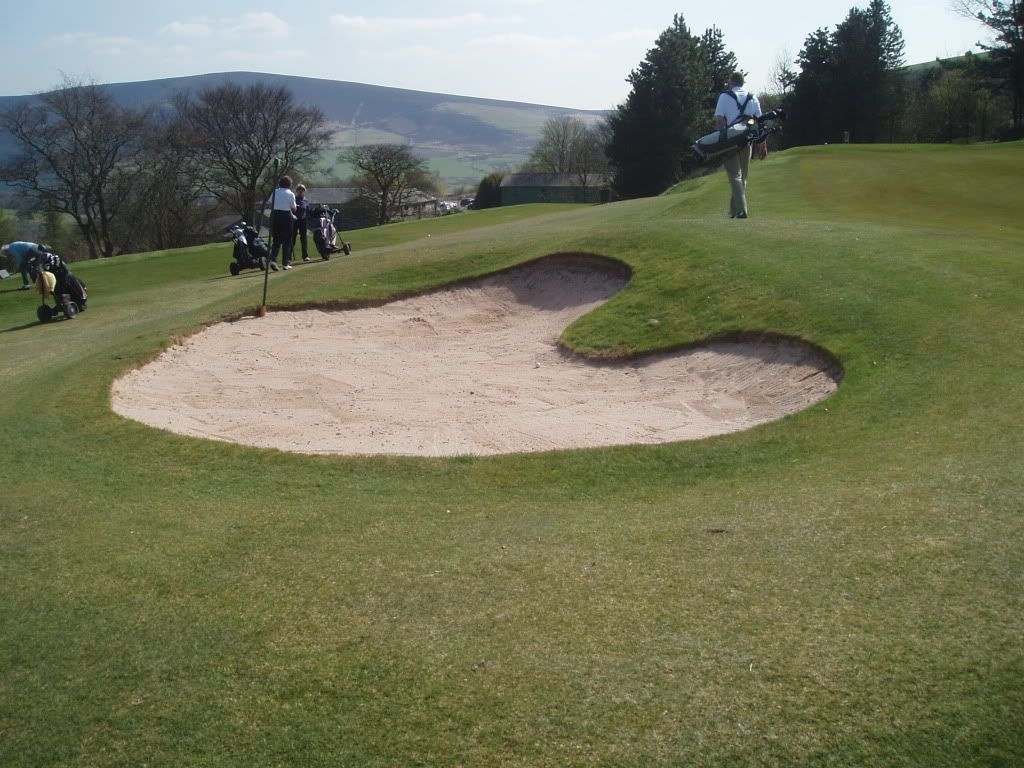
Not for the first time was I deceived by the side slope on the approach. Having hit what I thought was a perfect shot aimed on the right front of the green I found my ball in this bunker on the front left. It must have deviated some 25 yards from the line in running 10 yards!
17. 367 yards par 4
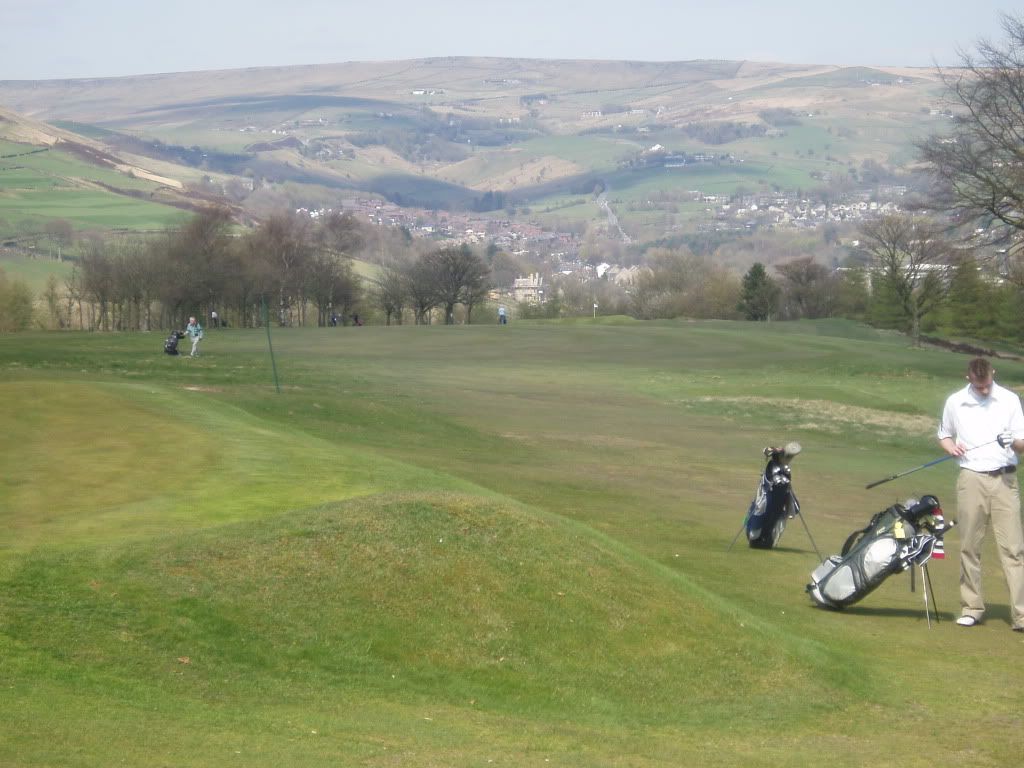
Yet again, from the tee you must flirt with trees down the left. Anything hit into the centre of the fairway will perish in the right-hand rough.


This is a narrow green with a narrow entrance and it runs downhill from front to back. The running approach needs perfect weighting.
18. 473 yards par 5
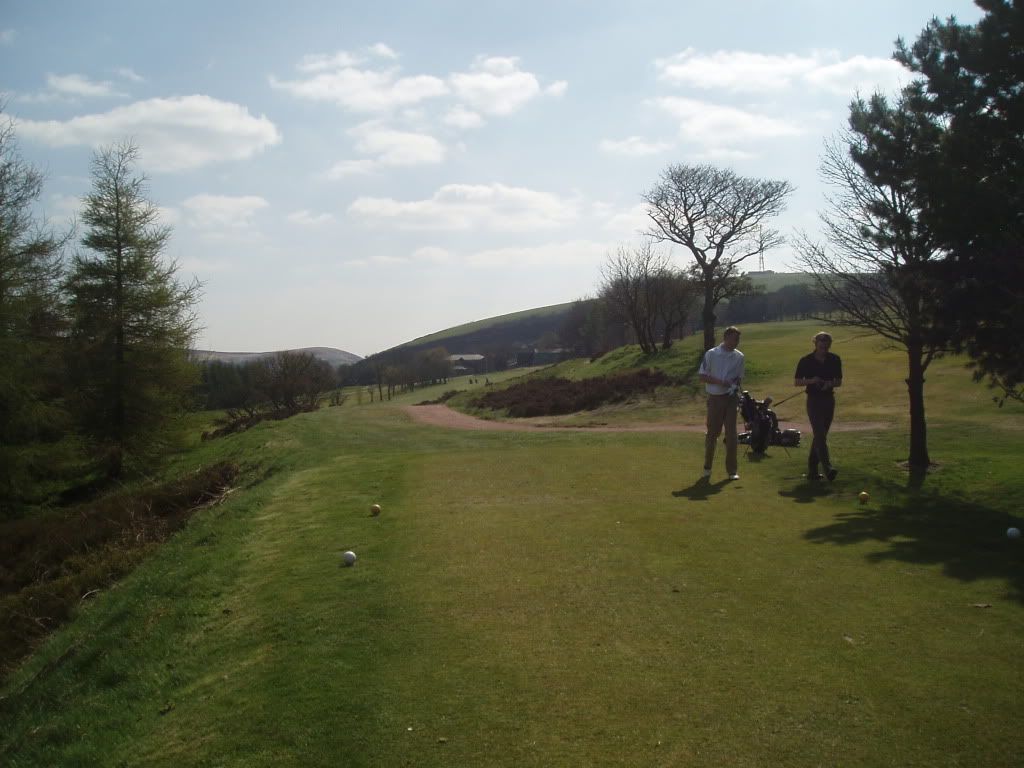
From the tee you must carry as much of the shoulder of land on the right as you dare for, inevitably, the ball will shoot off to the left on landing.
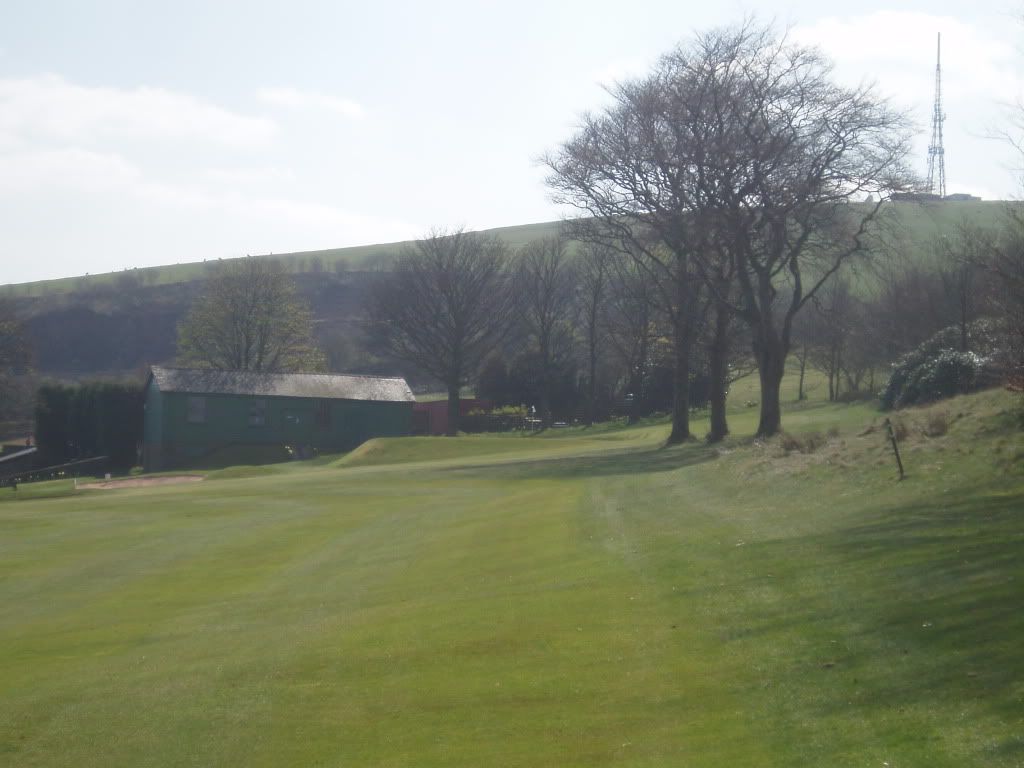
Having driven poorly I hit my rescue shot to here, about 200 yards short of the green. I had no viable shot because of these trees.
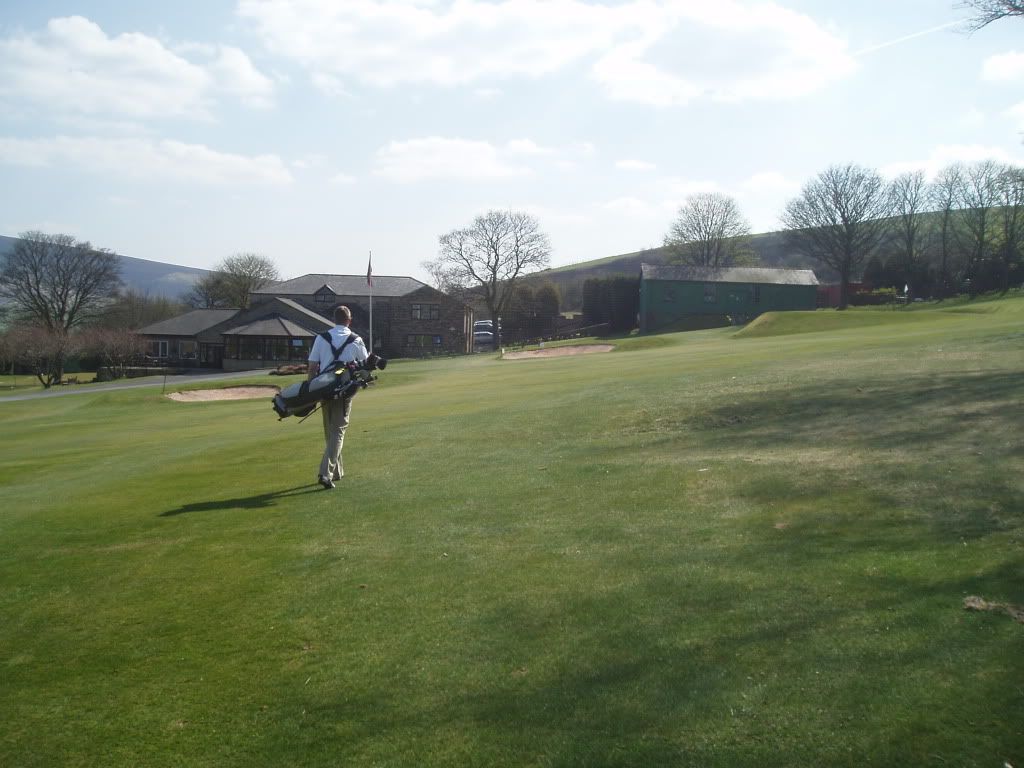
Giles and Edward drove more wisely – finishing on the 1st fairway. They both had about 200 yards to the green. With the elevation of the green they had to aim front right and hope for the approach to filter in from above. But they couldn’t take that route because of those same trees. Note how far from the direct line the bunkers are.
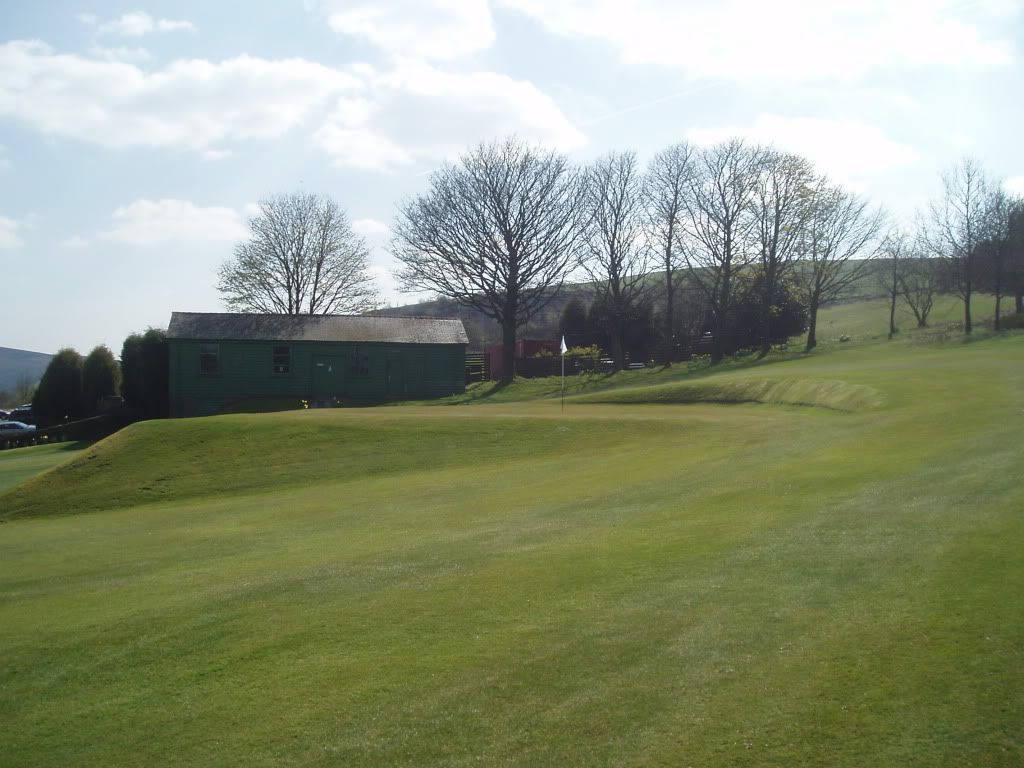
You can see where they wanted to land, although that slightly woolly bank to the side of the green might in any case have thwarted them.

Last shots of the day.